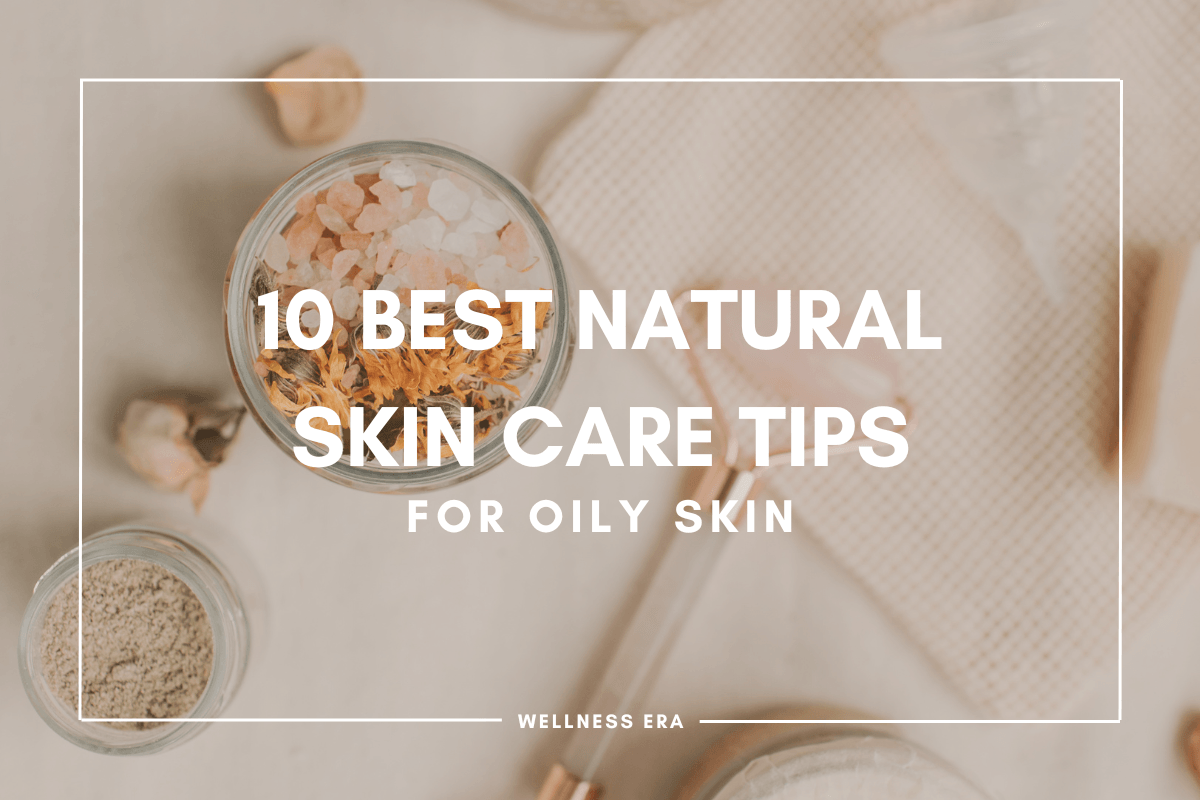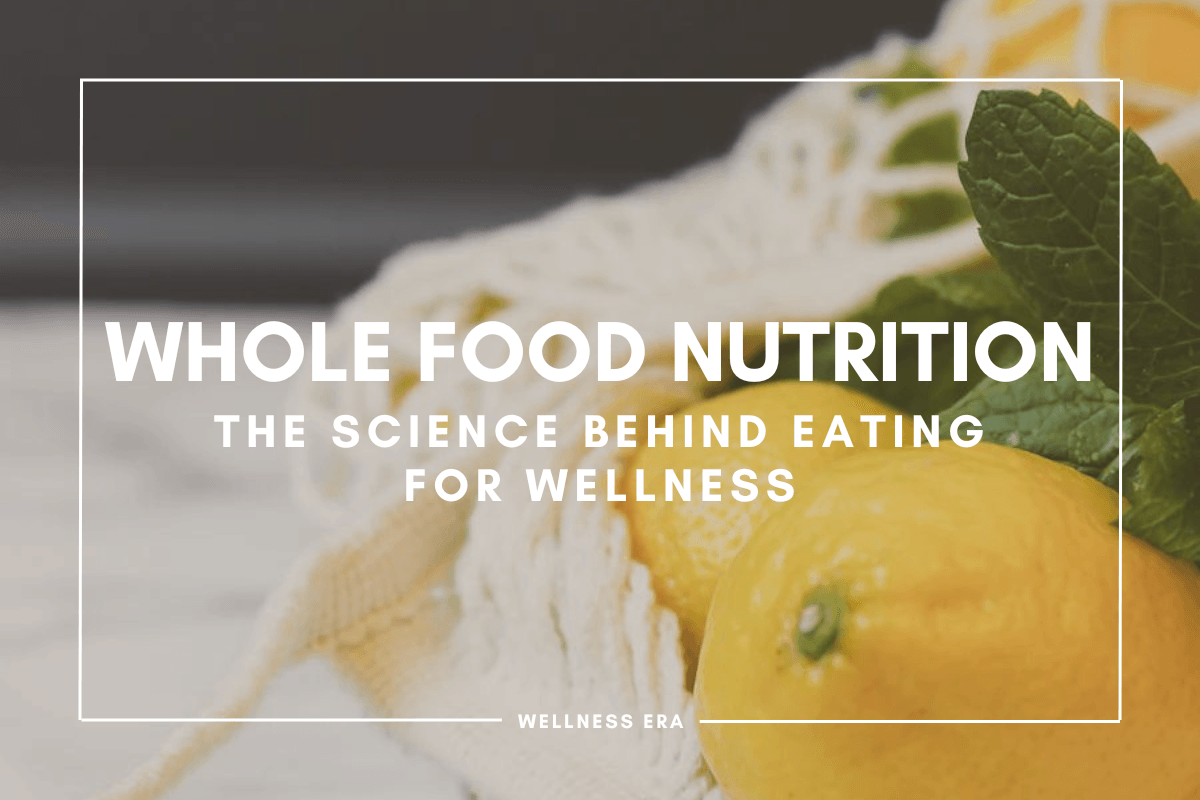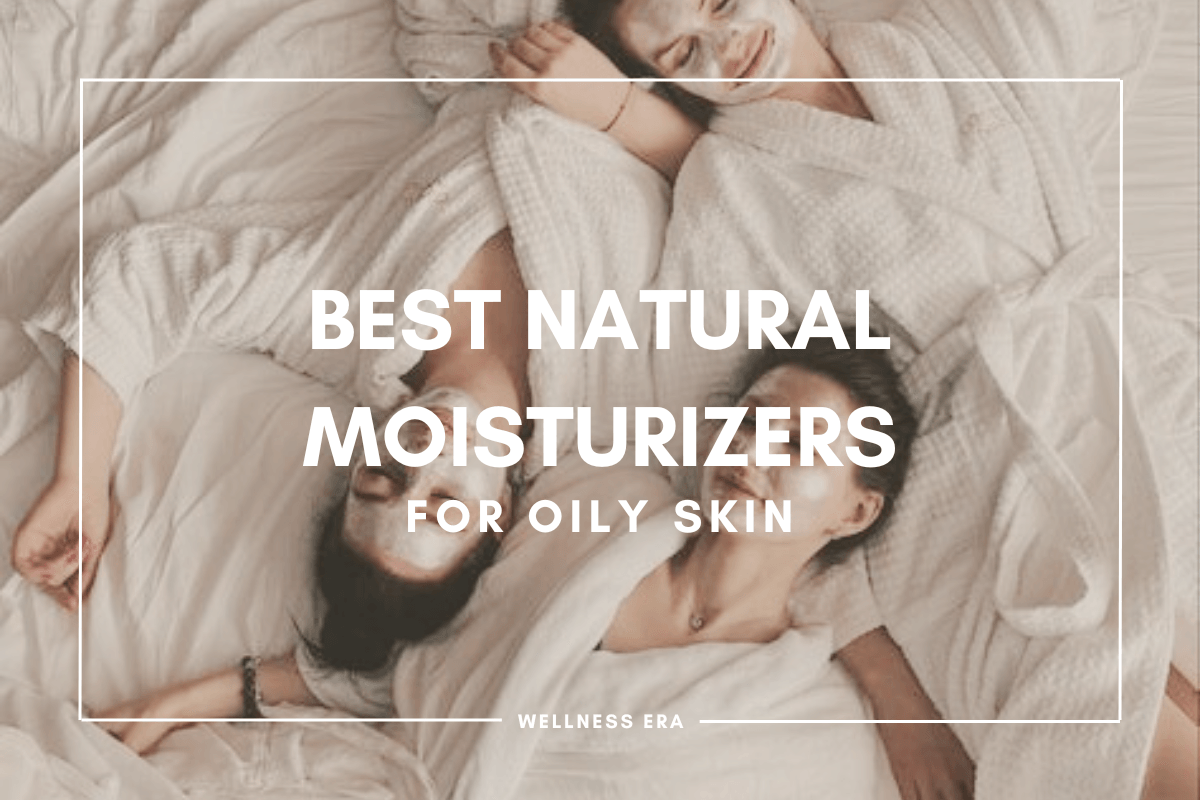How to Manage Oily Skin Naturally: A Step-by-Step Guide
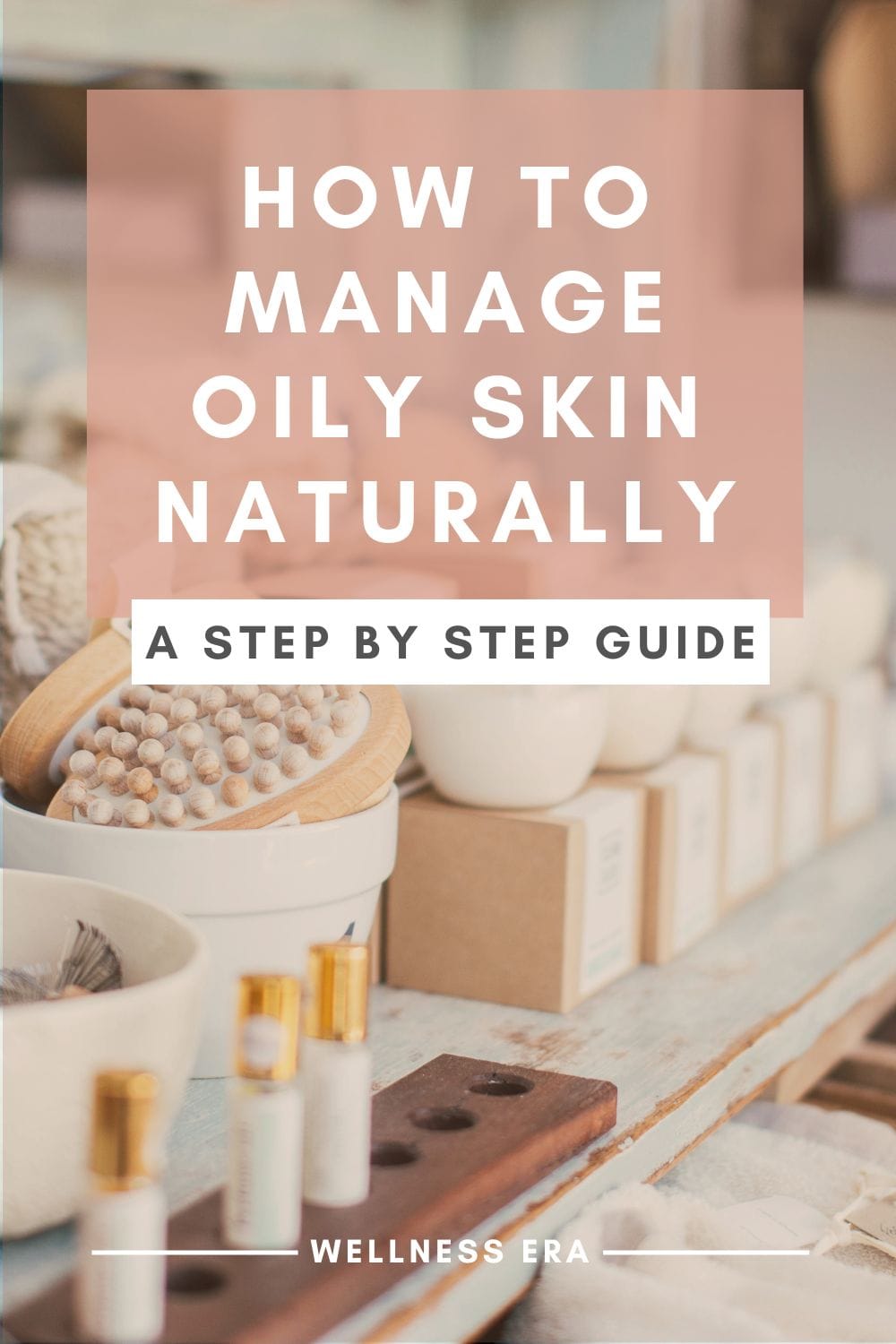
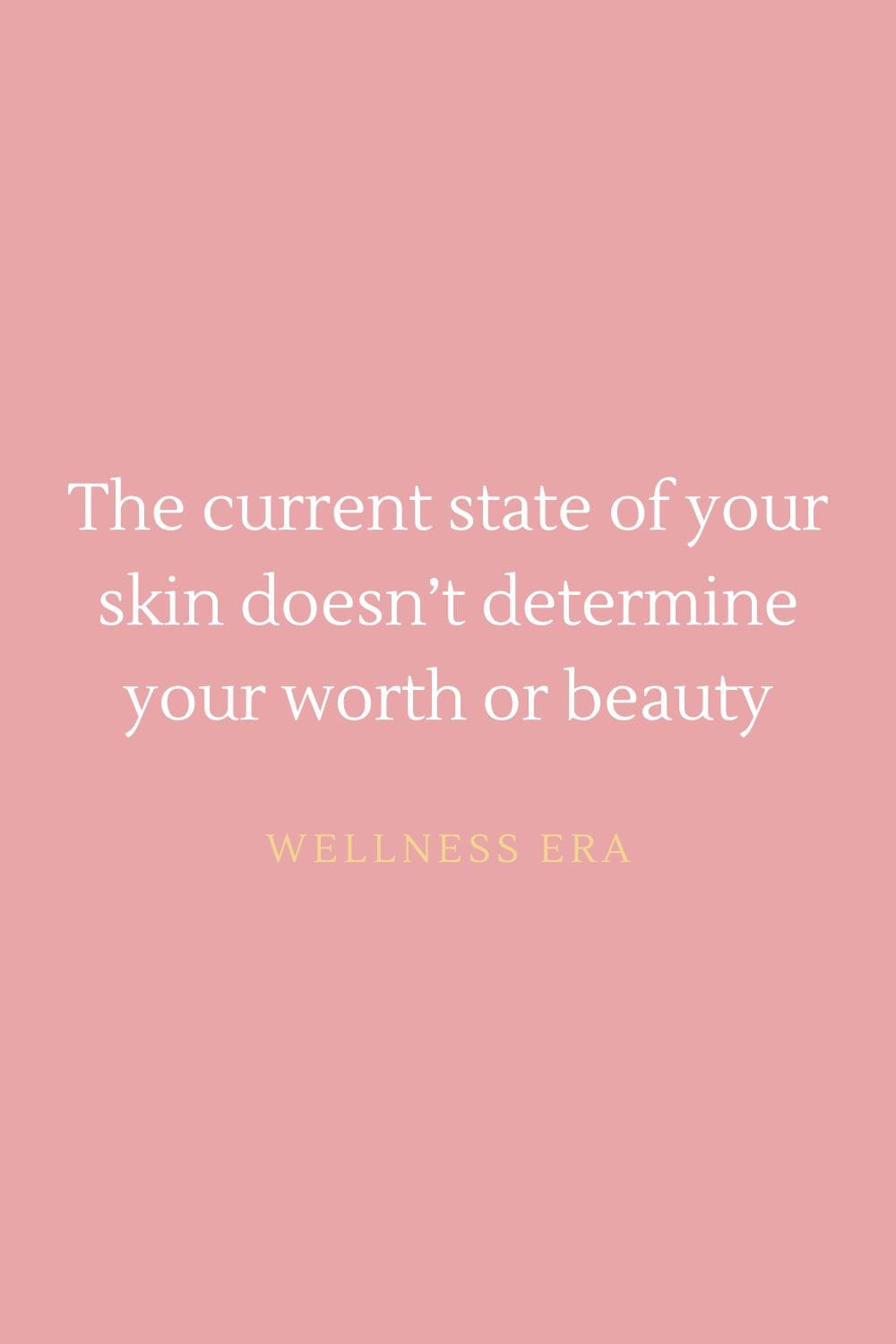
If you have oily skin, you know it can feel like a never-ending cycle. You wash your face, use a product that promises to reduce shine, and yet, by midday, there it is—your skin looking as shiny as ever, especially in the T-zone. It can be frustrating, but what if I told you that oily skin isn’t all bad? Yes, you heard that right. In fact, when managed correctly, oily skin can be one of your greatest assets.
Like many of you, I’ve struggled with oily skin for years. Acne breakouts, shiny skin, enlarged pores—you name it, I’ve dealt with it. At 22, after trying just about every harsh cleanser and product I could get my hands on, I realized something had to change. That’s when I discovered that treating oily skin is more than skin-deep—it involves what you eat, how you handle stress, and even the products you choose (or don't).
In this guide, I’m going to share my personal journey and a holistic approach to managing oily skin naturally. No more relying on quick fixes or stripping your skin dry. This is about understanding your skin, learning what triggers excess oil, and how you can embrace the natural benefits of oily skin. Ready to get started? Let’s dive in.
"This blog post is a comprehensive guide to managing oily skin care naturally, may take some time to read fully. If you'd like to skip ahead, feel free to use the table of contents to jump to the sections that interest you most."
Understanding the Root Causes of Oily Skin
Oily skin isn’t something that can simply be “fixed” by washing your face more often or using products that promise to absorb excess oil. To manage it effectively, it’s important to understand the root causes behind it. Your skin type is largely determined by genetics, but lifestyle and environmental factors play a significant role as well.
What Is Oily Skin?
Oily skin is a skin type that’s characterized by overactive sebaceous glands, which produce an excessive amount of sebum. Sebum is a natural oil that helps protect and moisturize your skin, but when there’s too much of it, your skin becomes shiny, greasy, and prone to breakouts. The extra oil can mix with dead skin cells, clogging your pores and leading to acne or blackheads.
One of the benefits of oily skin is that it often leads to fewer wrinkles as you age, thanks to the natural lubrication. However, without careful management, it can result in a persistent shiny appearance, making it harder to keep your complexion clear and balanced.
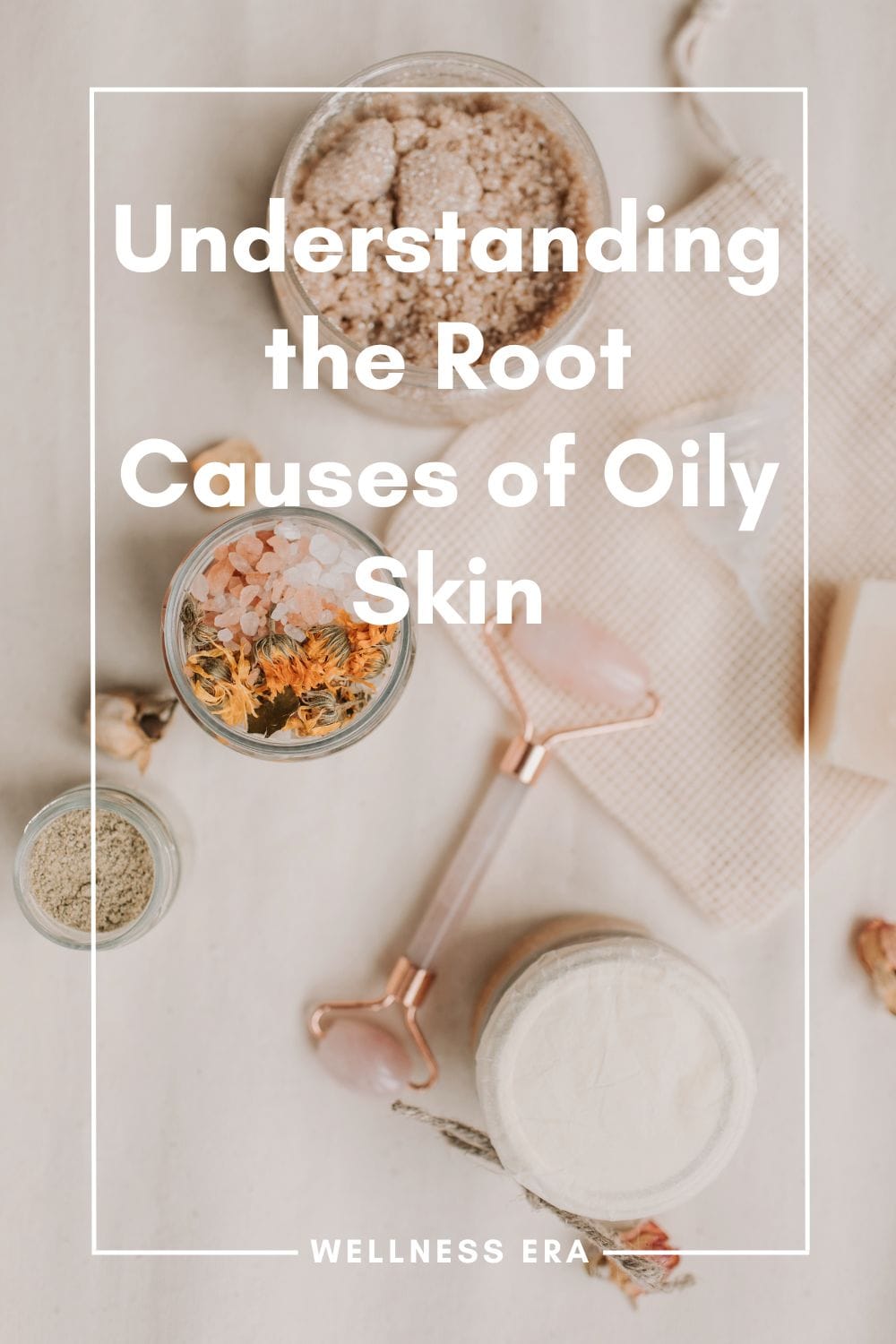
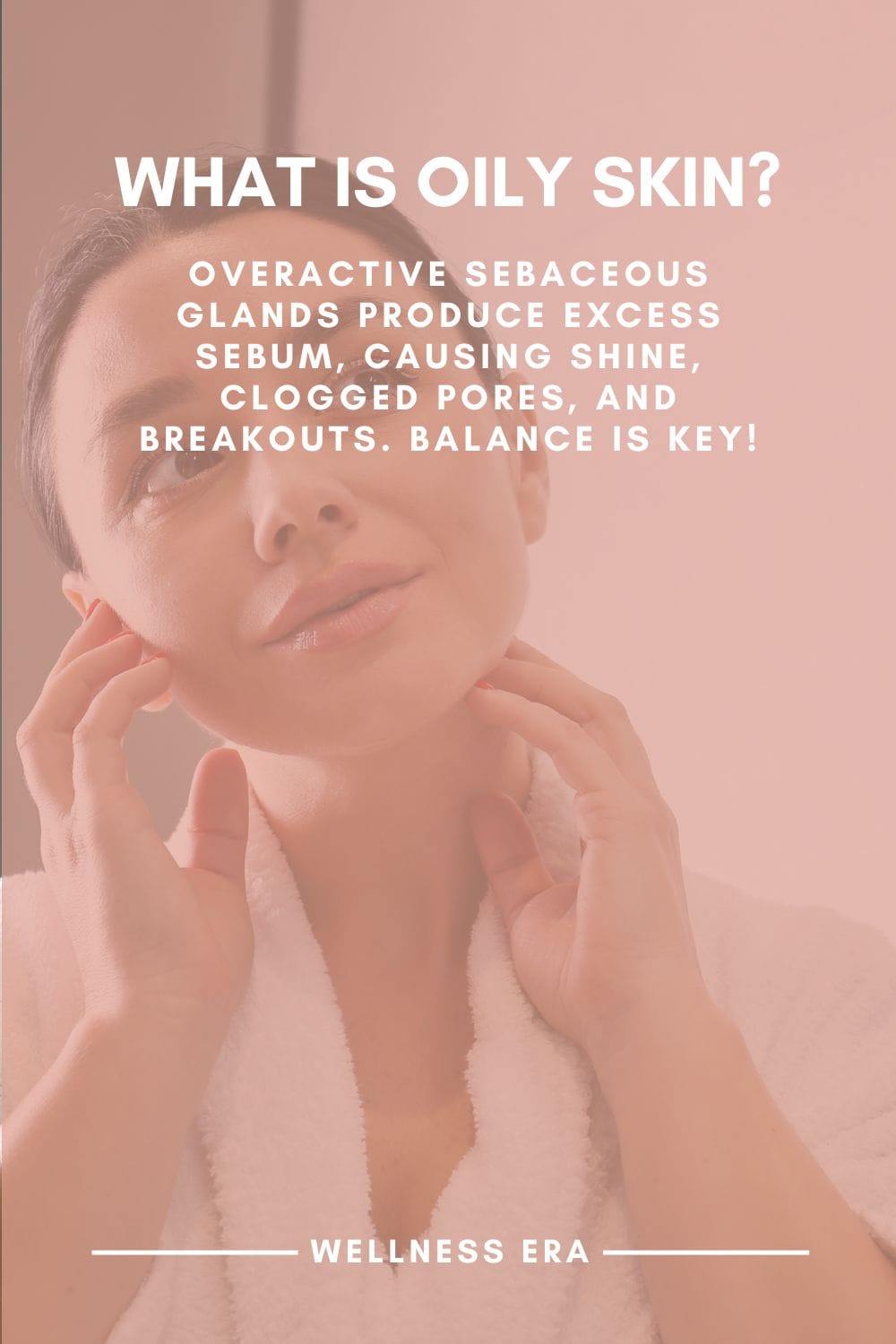
Common Causes of Oily Skin
Genetics: If you come from a family of oily skin, chances are your sebaceous glands will be naturally more active. Genetics play a significant role in determining skin type, and oily skin is often passed down through families.
Hormonal Changes: Hormones, particularly androgens (such as testosterone), can affect sebum production. This is why many people notice an increase in oiliness during puberty, menstruation, pregnancy, or menopause. Androgens stimulate sebaceous glands, increasing oil production, which can often lead to acne flare-ups during these hormonal shifts (Zouboulis, 2009).
Diet: What you eat can directly influence how much oil your skin produces. Diets high in processed sugars, refined carbohydrates, and dairy can trigger more sebum production. Certain foods may also inflame the gut lining, leading to a condition known as leaky gut, which has been linked to skin inflammation and breakouts (Bowe & Logan, 2011).
Stress: When you’re stressed, your body produces more cortisol, which stimulates your sebaceous glands to make more oil. Prolonged stress can increase inflammation and make skin conditions like acne worse (Chen et al., 2014).
Climate and Season: You might notice that your skin tends to get oilier during the warmer, humid months. Hot weather stimulates the skin to produce more oil, and those living in tropical or humid climates may find it more difficult to manage sebum levels.
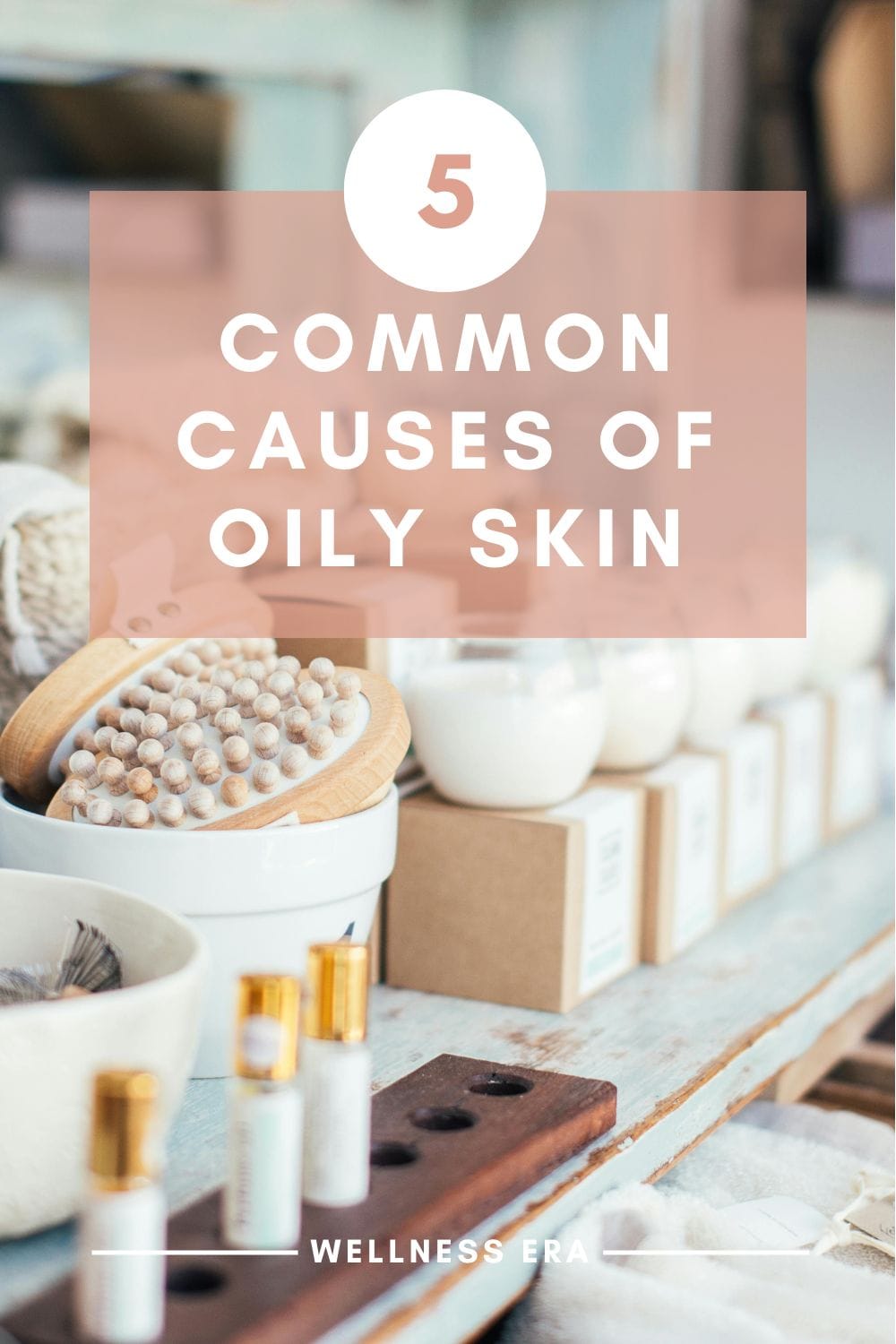
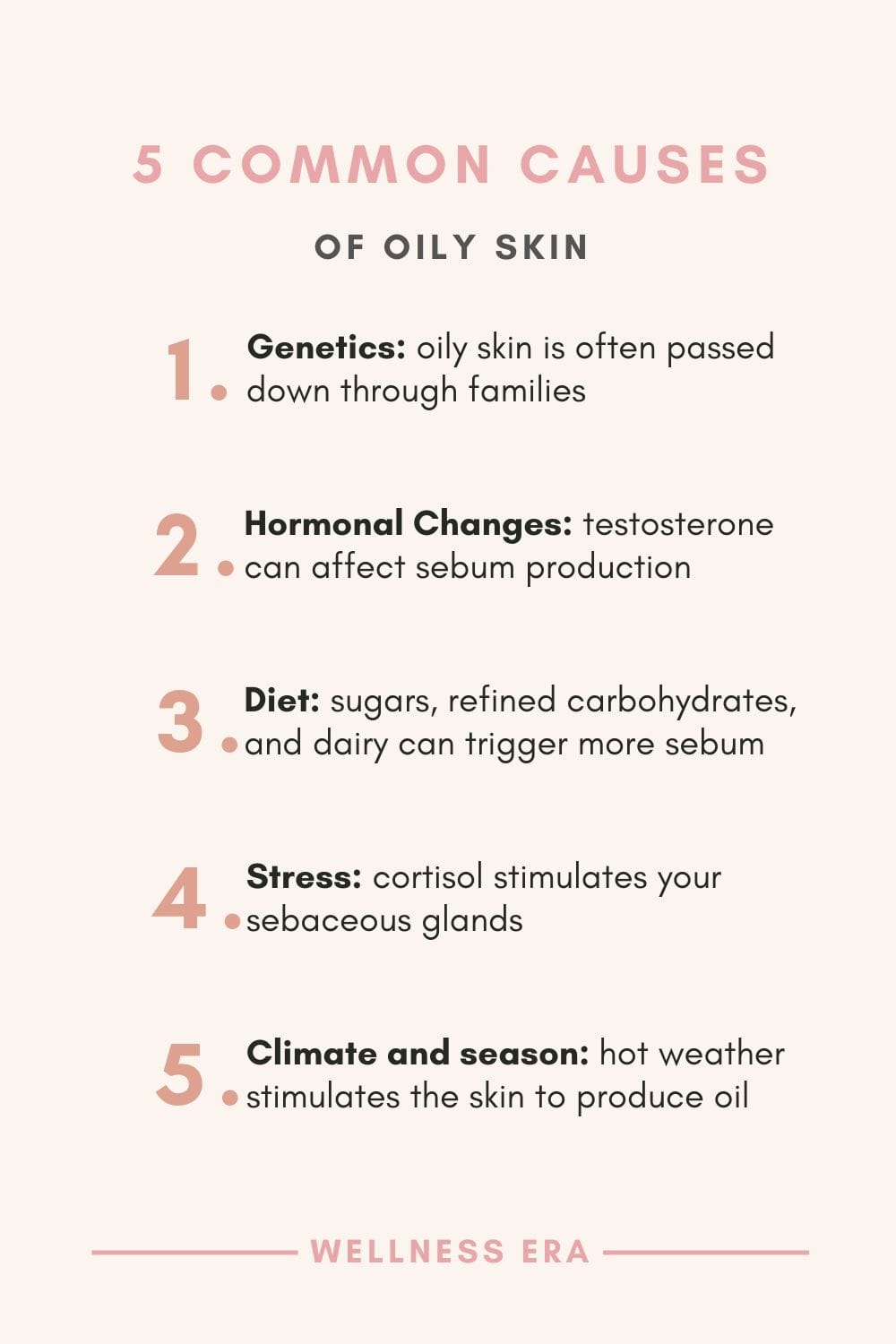
Oily skin isn’t just about surface shine—it’s often influenced by genetics, hormones, diet, stress, and the environment. By understanding what’s happening beneath the surface, like overactive sebaceous glands and hormonal fluctuations, you can start addressing oily skin in a more targeted way.
The key takeaway? It’s not just what you put on your skin, but also how you balance your lifestyle and environment.
References
Bowe, W.P. & Logan, A.C. (2011). Acne vulgaris, probiotics and the gut-brain-skin axis - back to the future? Gut Pathogens, 3(1), 1-11. (URL: Gut Pathogens)
Chen, Y.C., Huang, T.L., Chang, S.W., Tseng, H.Y., & Wu, C.Y. (2014). The role of chronic stress and low-grade inflammation in persistent acne: A case-control study in women. Journal of the American Academy of Dermatology, 71(5), 839-846.
Zouboulis, C.C. (2009). Sebaceous gland as a target for treatment of acne. Acta Derm Venereol Suppl, 216, 227–228. (URL: PubMed)
Step 1: Identify and Avoid Sebum Triggers: Food Allergies and Sensitivities
What we eat doesn’t just affect our energy levels or waistlines—it also plays a crucial role in the health of our skin. Many people with oily skin don’t realize that food allergies or sensitivities could be contributing to their excess oil production. When your body reacts negatively to certain foods, it can trigger a response that manifests on your skin, sometimes worsening conditions like acne or inflammation.
How Allergies and Food Sensitivities Lead to Skin Issues
When you consume foods that your body is sensitive to or allergic to, your immune system goes into overdrive, causing inflammation throughout the body. This inflammatory response can lead to a range of skin problems, from redness and irritation to more serious conditions like eczema or acne. The gut-skin connection is well-established—when your digestive system is unhappy, your skin often reflects this through breakouts or excess oil.
For example, if you have a food sensitivity to dairy, your body might produce more sebum as a result of the inflammation triggered by that food. Over time, consuming foods that you are sensitive to can lead to chronic inflammation, disrupting the skin's natural barrier and causing it to overproduce oil (Bowe & Logan, 2011).
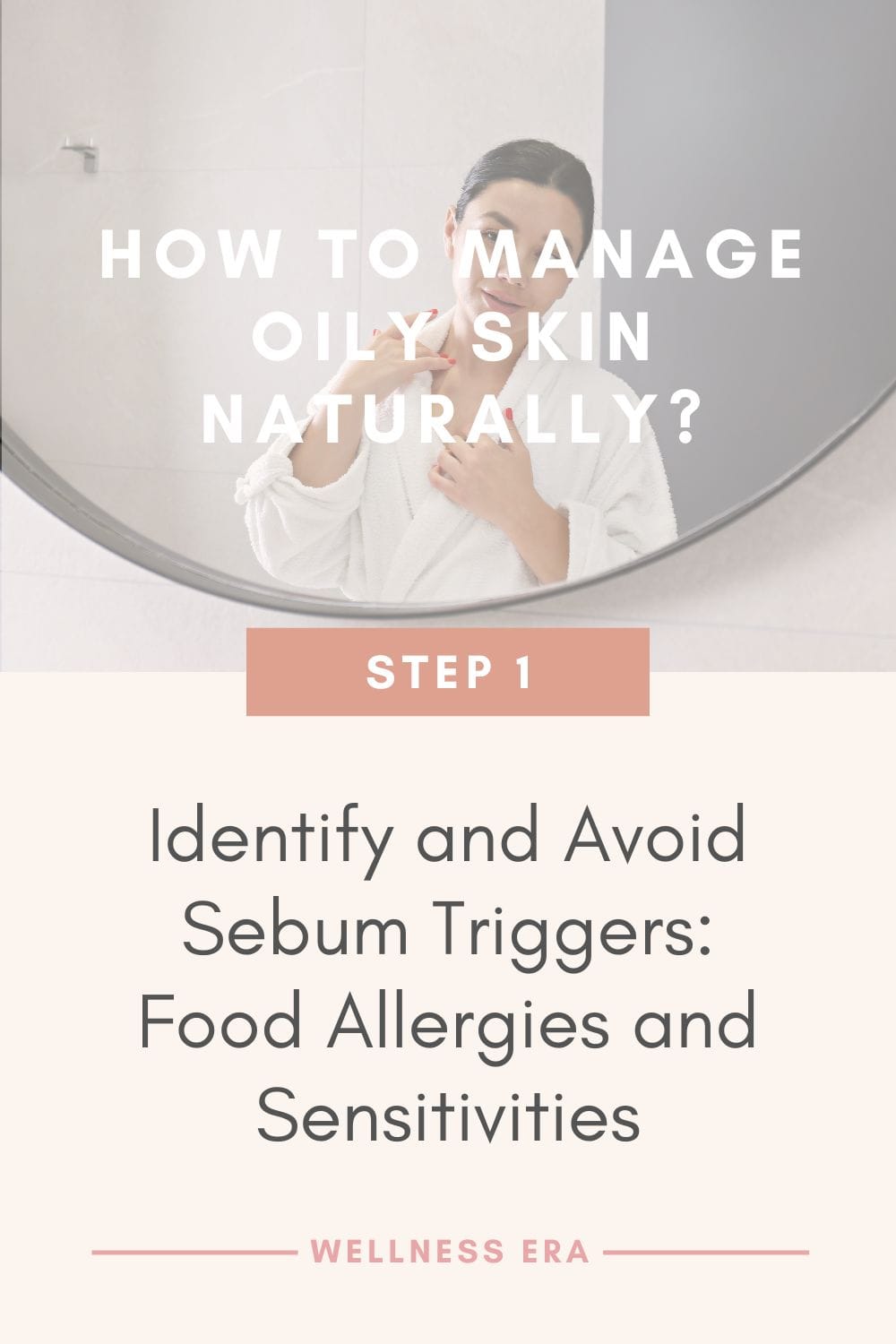
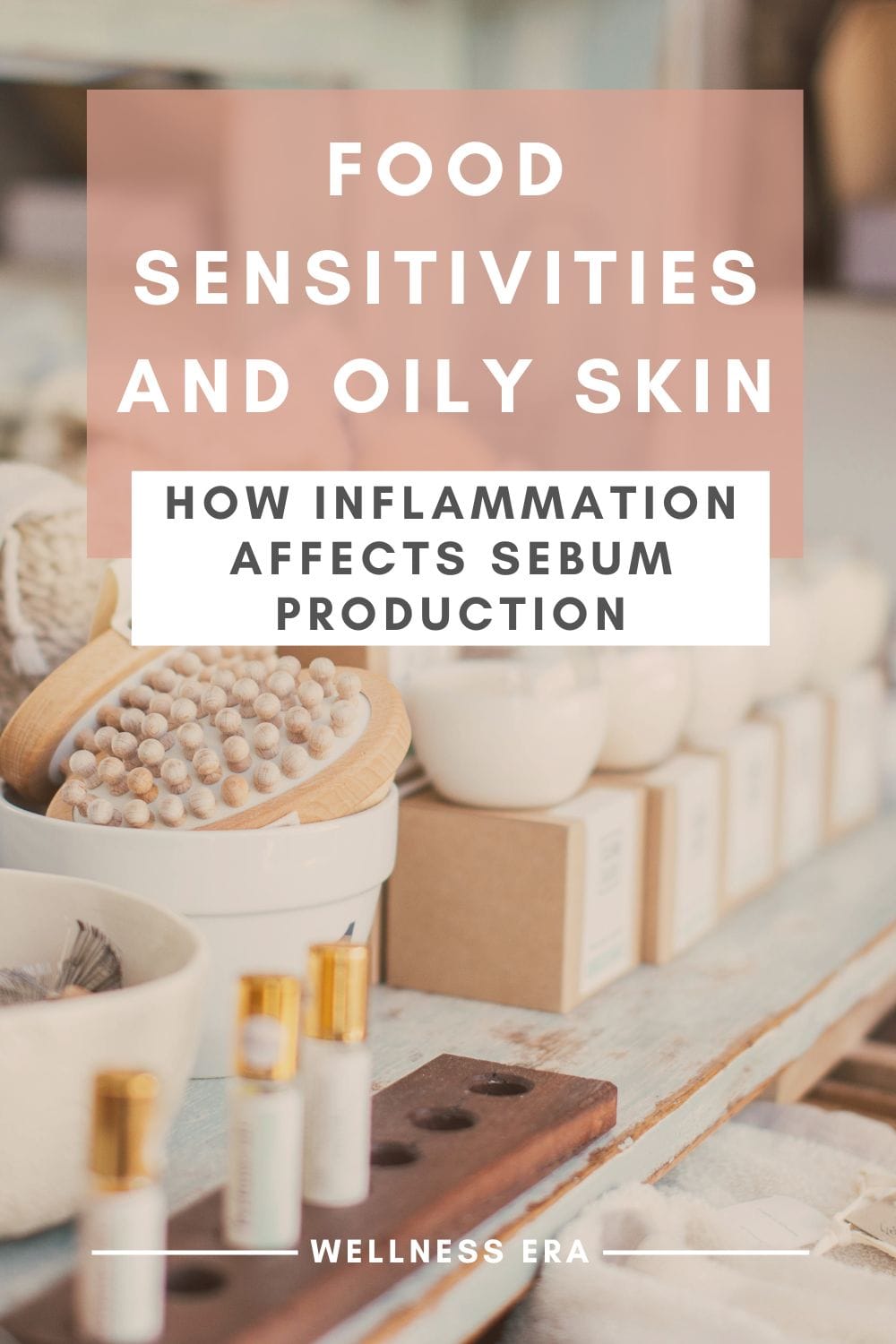
Common Foods That May Cause Excess Sebum Production
Certain foods are known to harm the gut lining and cause inflammation, which in turn, can increase sebum production and lead to breakouts. Here are some common culprits:
Dairy Products: Milk, cheese, and other dairy products have been linked to an increase in acne and oily skin. This is partly due to the hormones present in dairy, which can disrupt your own hormonal balance and lead to increased oil production (Bowe & Logan, 2011).
Processed Sugars: Foods high in refined sugar, like candy, pastries, and sodas, can cause spikes in insulin, leading to inflammation and excess sebum production. These sugar spikes can also aggravate existing acne by causing rapid increases in blood sugar levels (Melnik, 2012).
Gluten and Refined Carbohydrates: Gluten, found in foods like bread and pasta, can cause inflammation in those with sensitivities, leading to breakouts and oilier skin. Additionally, refined carbohydrates, such as white bread and pasta, are rapidly converted to sugar in the body, which can also trigger an inflammatory response.
Trans Fats and Processed Foods: These unhealthy fats can damage the gut lining, leading to what’s commonly known as “leaky gut.” When the gut lining becomes permeable, toxins and undigested food particles can enter the bloodstream, causing systemic inflammation and contributing to excess sebum production (Bowe & Logan, 2011).
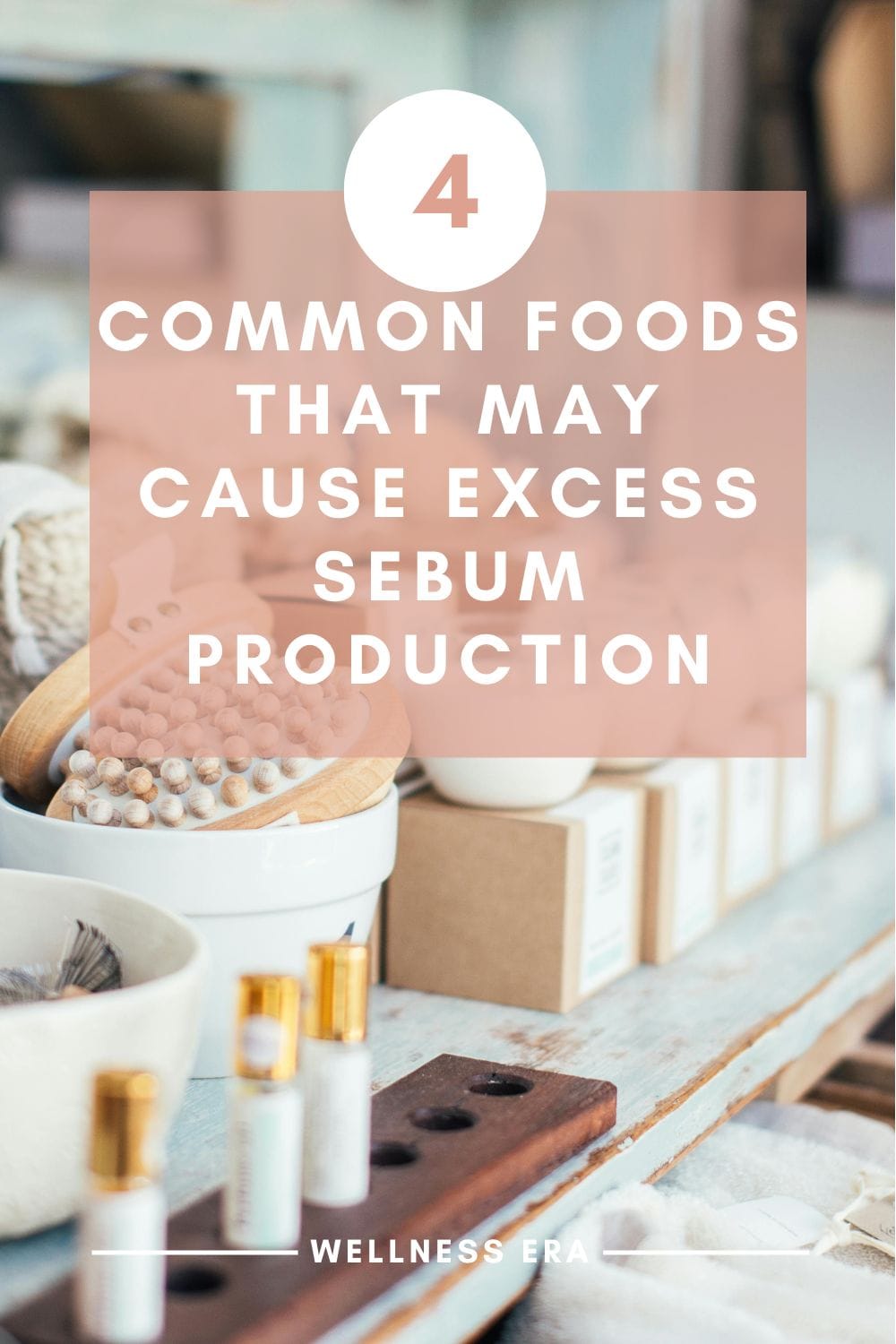
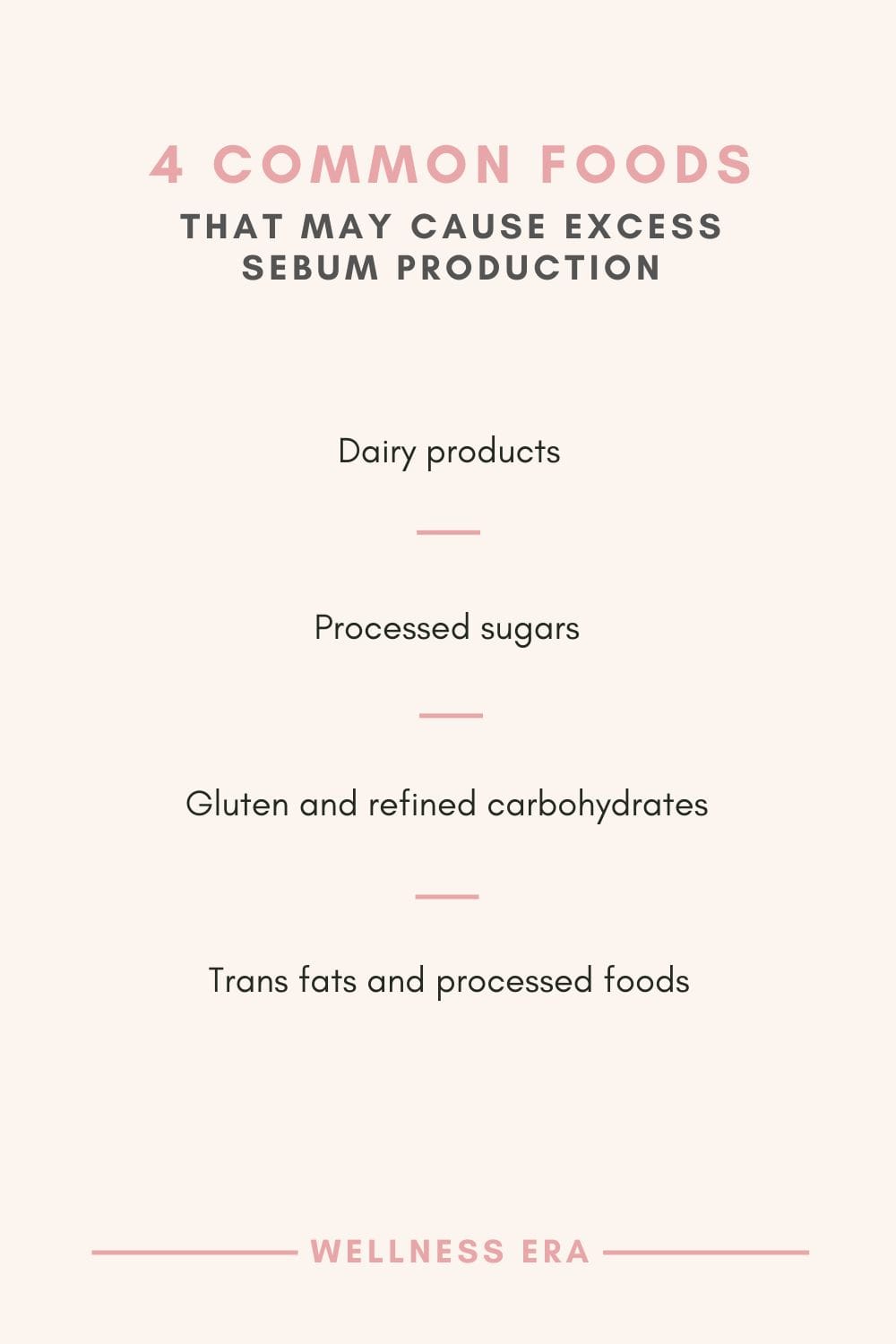
How to Test for Food Sensitivities
If you suspect that your diet is affecting your skin, testing for food sensitivities can help you pinpoint which foods may be causing problems. There are a few methods you can try:
Elimination Diet: One of the most effective ways to test for food sensitivities is to remove potential trigger foods from your diet for 2-4 weeks. After that period, reintroduce one food at a time and monitor how your skin reacts.
Food Sensitivity Blood Tests: These tests measure your body's IgG antibodies in response to certain foods. However, results can vary, and it's important to work with a healthcare provider to interpret the findings.
Skin Prick Test: This is commonly used to identify immediate allergic reactions. An allergen is applied to your skin, and any reactions (like redness or swelling) are monitored.
At-Home Food Sensitivity Kits: These kits often measure IgG antibodies through a finger-prick blood sample. They can be a convenient option, but results should be discussed with a professional to ensure accuracy.
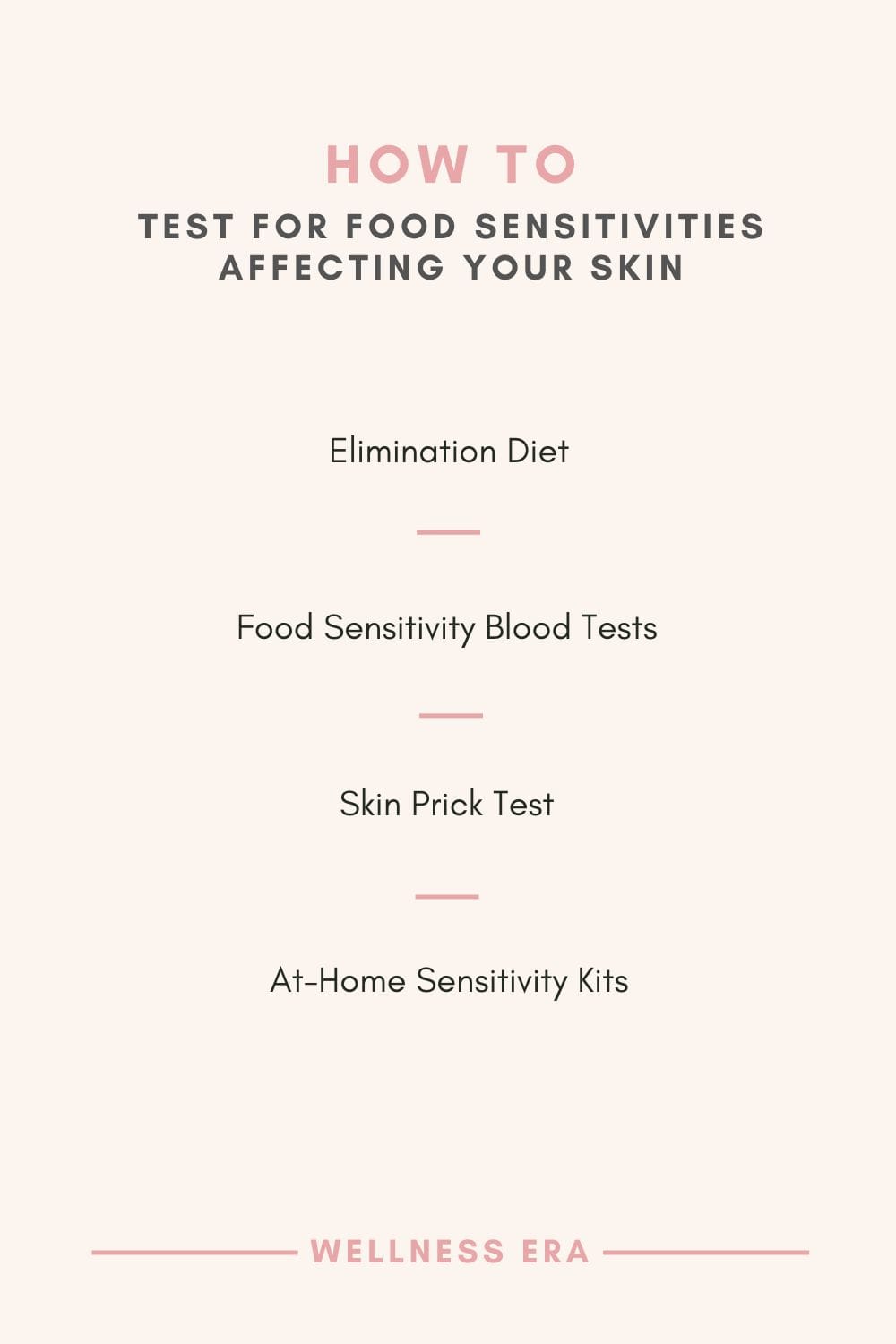
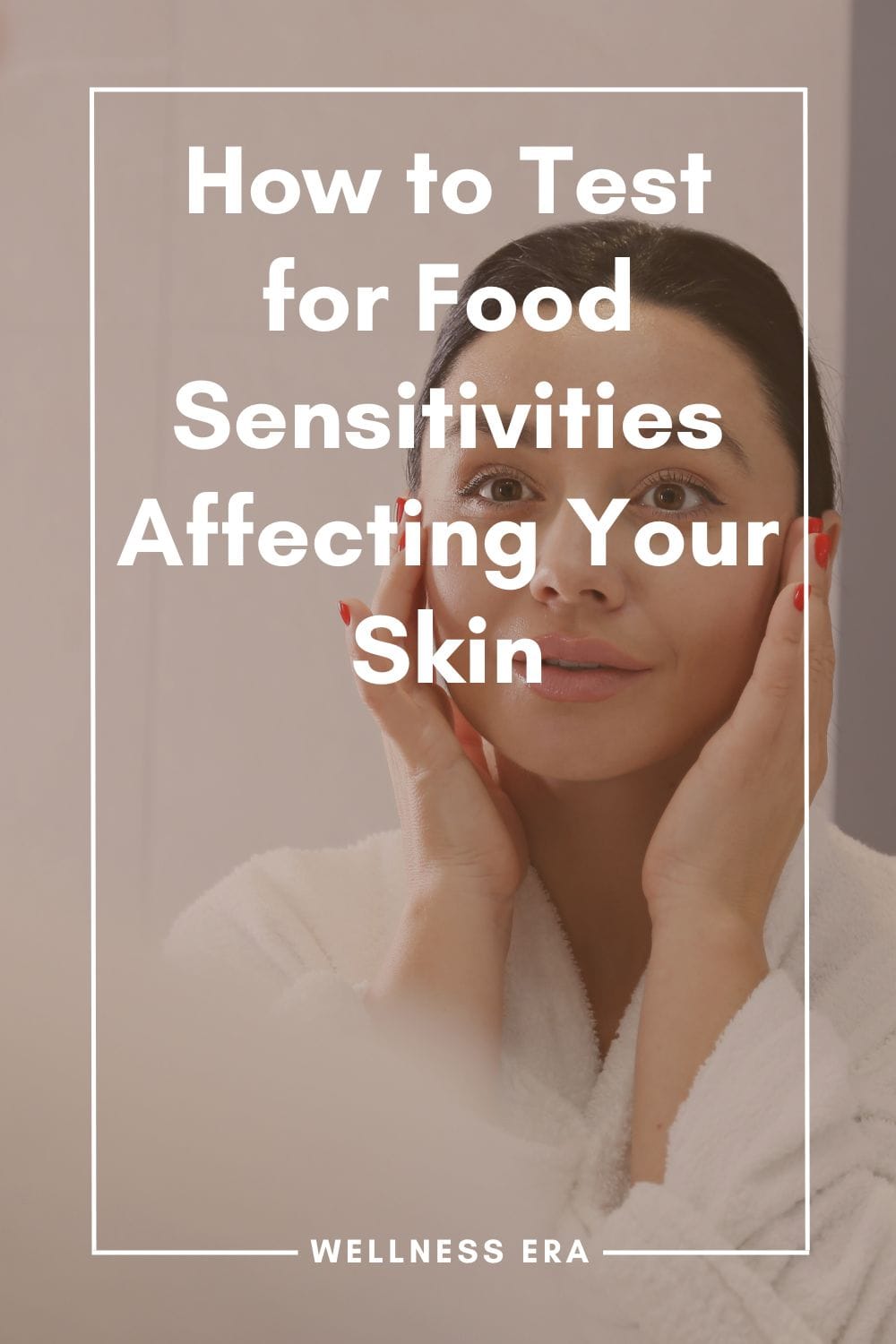
What you eat can have a major impact on how oily your skin gets. Food sensitivities and allergies, like those to dairy or gluten, can cause inflammation and trigger more oil production.
The solution? Pay attention to your gut, consider an elimination diet, and work with a healthcare provider to pinpoint your skin’s dietary triggers for clearer, healthier skin from the inside out.
Did you know your diet can impact your skin’s oil production? Whole, nutrient-rich foods help balance skin, while avoiding food triggers can reduce excess oil. Discover how to nourish your skin from the inside out with this guide on Whole Food nutrition: the science behind eating for wellness and discover how to nourish your skin naturally!
References
Bowe, W.P. & Logan, A.C. (2011). Acne vulgaris, probiotics and the gut-brain-skin axis - back to the future? Gut Pathogens, 3(1), 1-11. (URL: Gut Pathogens)
Chen, Y.C., Huang, T.L., Chang, S.W., Tseng, H.Y., & Wu, C.Y. (2014). The role of chronic stress and low-grade inflammation in persistent acne: A case-control study in women. Journal of the American Academy of Dermatology, 71(5), 839-846. (URL: PubMed)
Melnik, B.C. (2012). Milk consumption: aggravating factor of acne and promoter of chronic diseases of Western societies. Journal of Dermatological Science, 65(2), 77-83. (URL: PubMed)
Zouboulis, C.C. (2009). Sebaceous gland as a target for treatment of acne. Acta Derm Venereol Suppl, 216, 227–228. (URL: PubMed)
Step 2: Identify and Avoid Sebum Triggers: Skin Sensitivities
Just like food sensitivities can wreak havoc on your skin, so too can certain skincare ingredients. Many people with oily skin unknowingly use products that irritate their skin, triggering an overproduction of oil as the skin attempts to defend itself. Identifying which ingredients are causing these issues can be a game-changer when managing oily skin.
How Allergies and Sensitivities Lead to Excess Oil Production
When your skin is exposed to ingredients it’s sensitive or allergic to, it can lead to irritation, inflammation, and even a disruption in the skin’s natural moisture barrier. When this barrier is compromised, your skin experiences transepidermal water loss (TEWL), a process where essential moisture evaporates from the skin, causing dryness. To compensate, your sebaceous glands may ramp up oil production in an effort to protect the skin from further damage (Kim et al., 2018).
Inflammatory responses to allergens in skincare products can also disrupt the delicate pH balance of your skin, further promoting excess sebum production. For those with oily or acne-prone skin, this can worsen breakouts and contribute to clogged pores. It’s essential to identify irritants and switch to gentle, non-irritating alternatives that support your skin’s natural barrier.
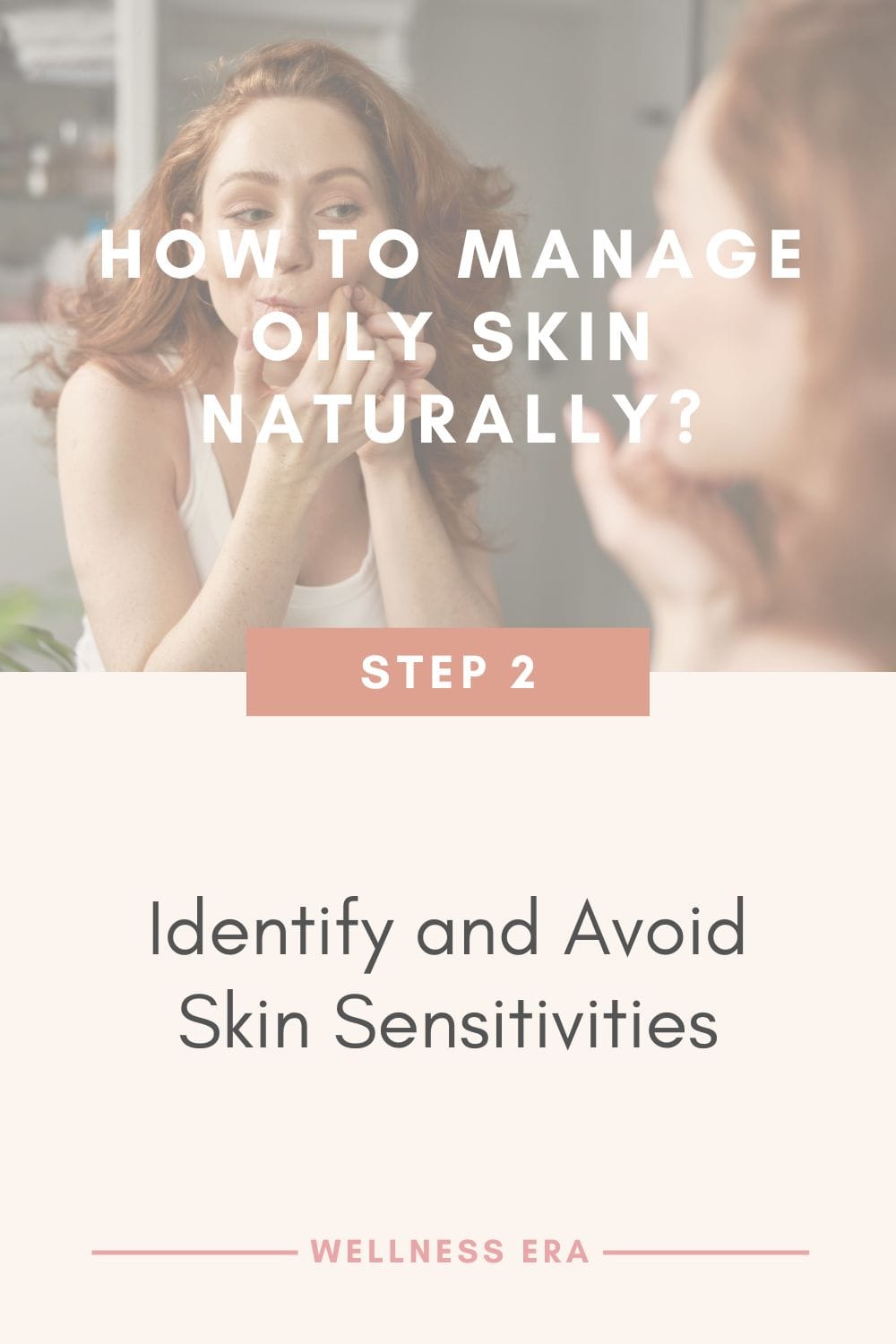
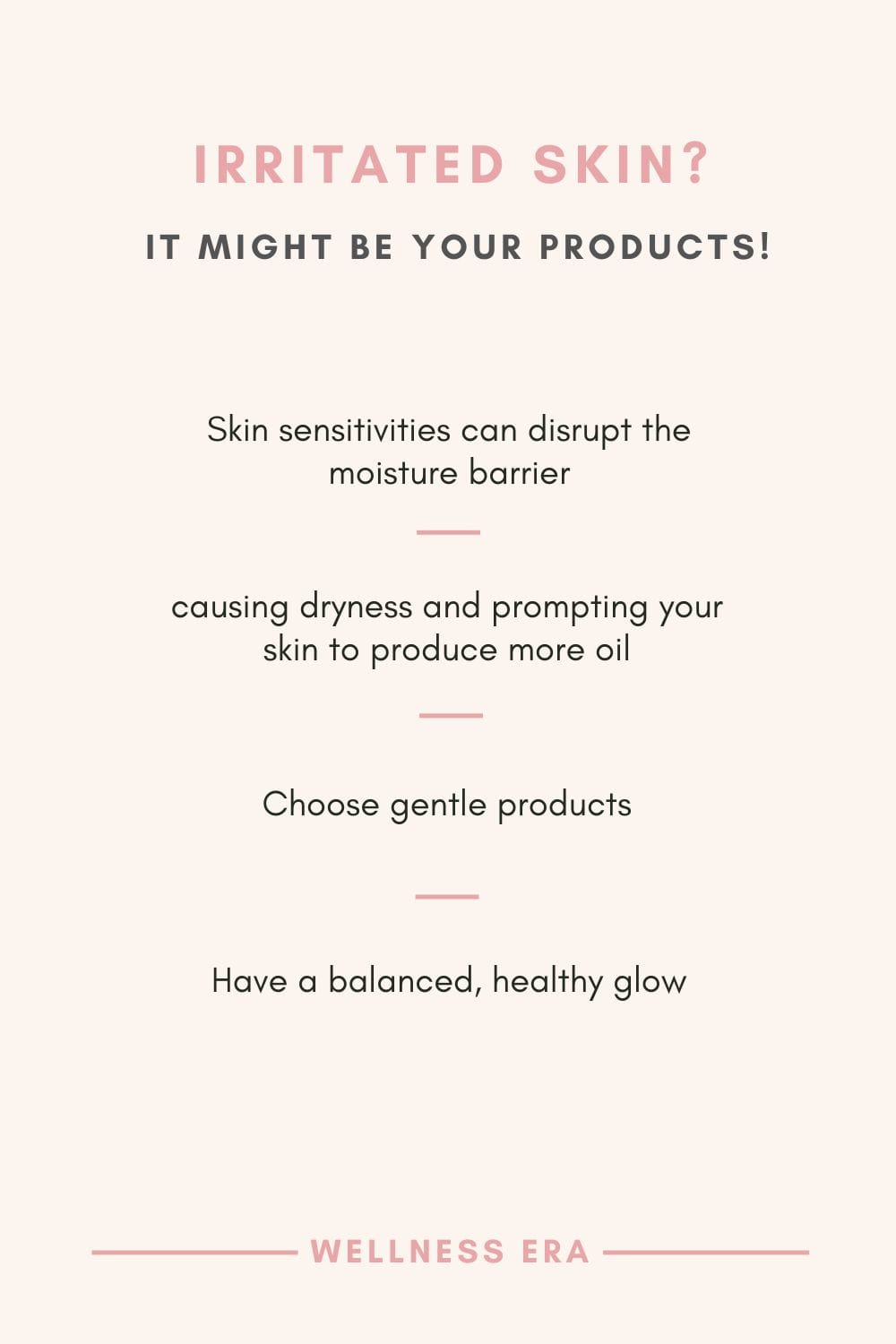
Common Irritants in Skin Care That Cause Overproduction of Sebum
Certain ingredients in skincare products are notorious for causing irritation and excess oil production, even if they seem harmless on the surface. Below are some of the most common culprits:
Fragrance: While fragrance might make products smell lovely, it’s one of the most common causes of skin irritation. Fragrances, especially synthetic ones, can disrupt the skin barrier, leading to increased oil production as your skin tries to protect itself (Lazarov, 2015).
Alcohol: Alcohol is often used in toners or astringents designed for oily skin because it gives that “tight” feeling and removes excess oil. However, alcohol-based products can strip the skin of its natural oils, leading to even more sebum production as your skin overcompensates for the loss of moisture (Draelos, 2012).
Sulfates: Found in many cleansers and shampoos, sulfates are harsh cleansing agents that can strip the skin of natural oils. This leads to irritation and increased oil production as your skin tries to recover from the harsh treatment (Frosch, 2012).
Essential Oils: While many natural skincare enthusiasts love essential oils, some, like tea tree oil or lavender, can cause irritation for sensitive or oily skin types. These oils can trigger inflammation and exacerbate excess sebum production, especially when used in high concentrations (Orchard & Van Vuuren, 2017).
Occlusive Ingredients: Ingredients like mineral oil or petroleum jelly can trap sebum, sweat, and bacteria beneath the skin’s surface, leading to clogged pores and acne. These are often found in moisturizers and should be avoided by those with oily, acne-prone skin (Draelos, 2012).
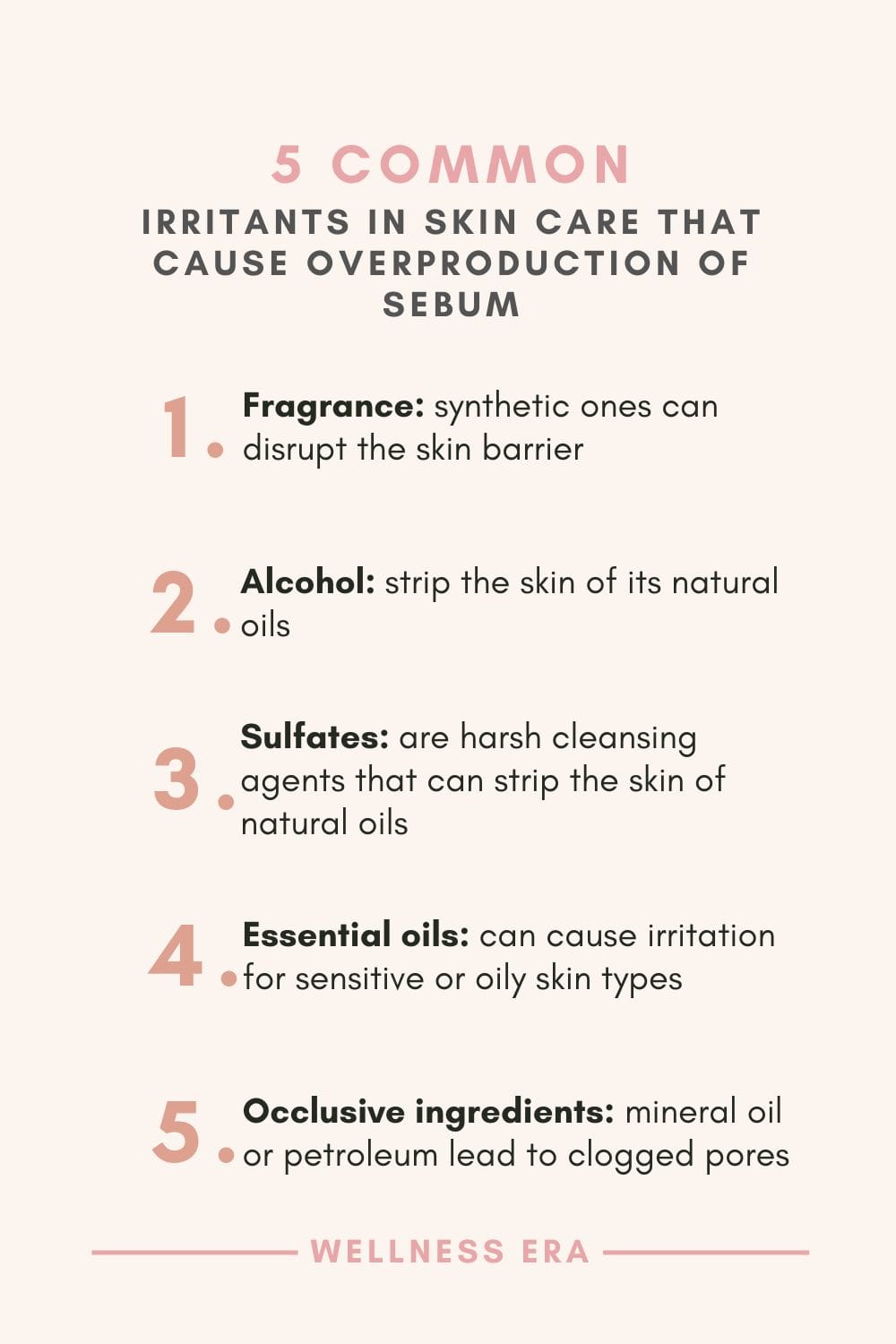
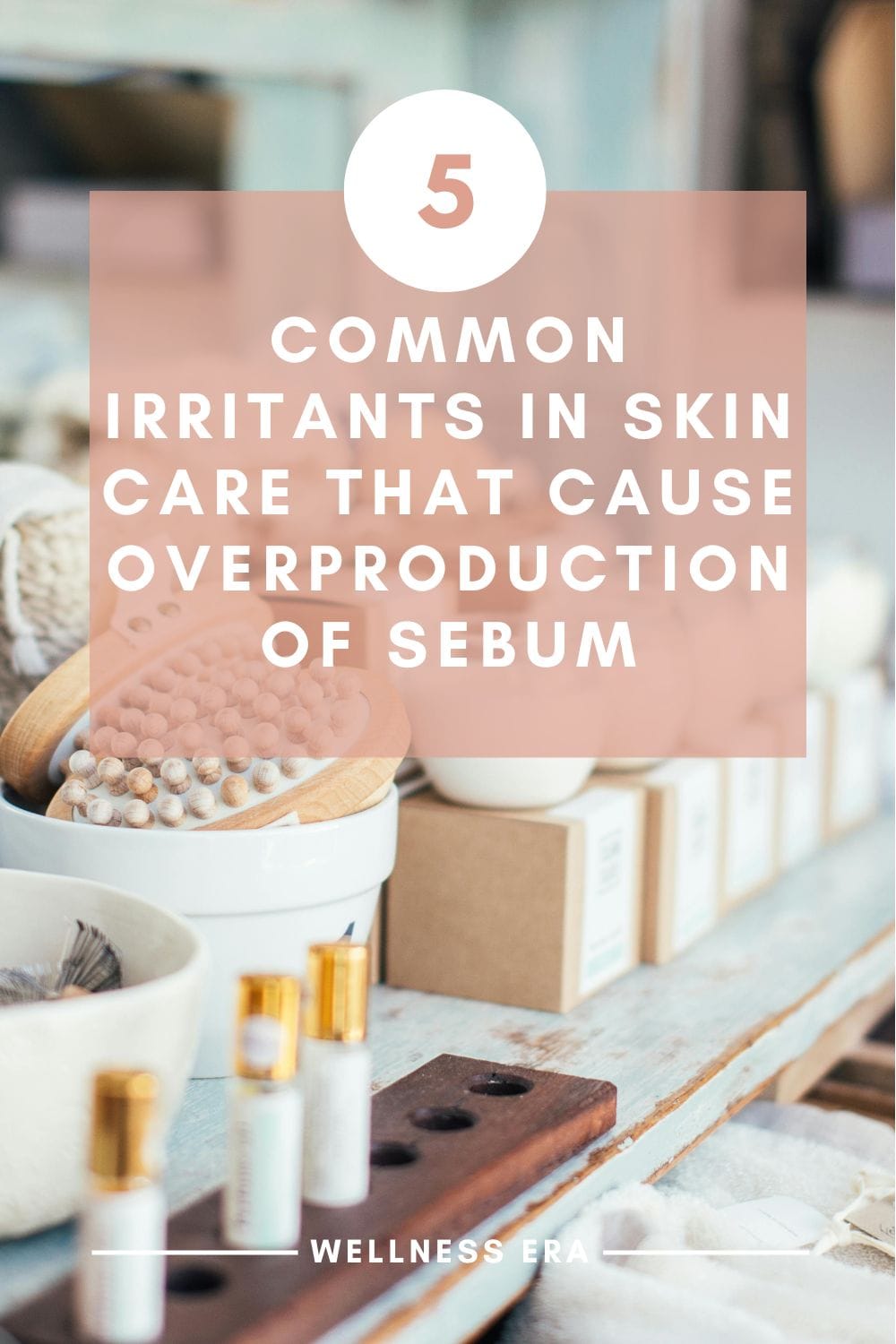
Natural Alternatives to Prevent Skin Irritation and Balance Oil
The key to managing oily skin naturally is to avoid products that cause irritation and switch to gentle, non-comedogenic, and hypoallergenic alternatives. Here are some tips for choosing the right products:
Fragrance-Free: Opt for products that are labeled “fragrance-free” or “unscented” to minimize the risk of irritation. Even natural fragrances like essential oils can cause issues for sensitive skin (Warshaw et al., 2011).
Alcohol-Free: Choose toners or cleansers that are alcohol-free. Look for soothing alternatives like witch hazel or rose water, which can help tone the skin without stripping its natural oils (Draelos, 2012).
Sulfate-Free Cleansers: Sulfate-free cleansers are gentler on the skin and won’t strip away essential moisture. Look for ingredients like coconut-derived surfactants that cleanse without causing irritation (Frosch, 2012).
Non-Comedogenic Moisturizers: Select moisturizers that are non-comedogenic, meaning they won’t clog your pores. Lightweight, water-based moisturizers or those with ingredients like hyaluronic acid and aloe vera are great options for oily skin, as they hydrate without causing breakouts (Draelos, 2012).
Finding the perfect balance for oily skin is all about using the right ingredients—but what about hydration? Skipping moisturizer can actually make your skin produce more oil, so choosing the right one is key! If your skin is oily but sensitive, you might want to check out the Best Natural Moisturizers for Sensitive Skin.Where you can discover lightweight, nourishing options that keep your skin happy without the grease!"
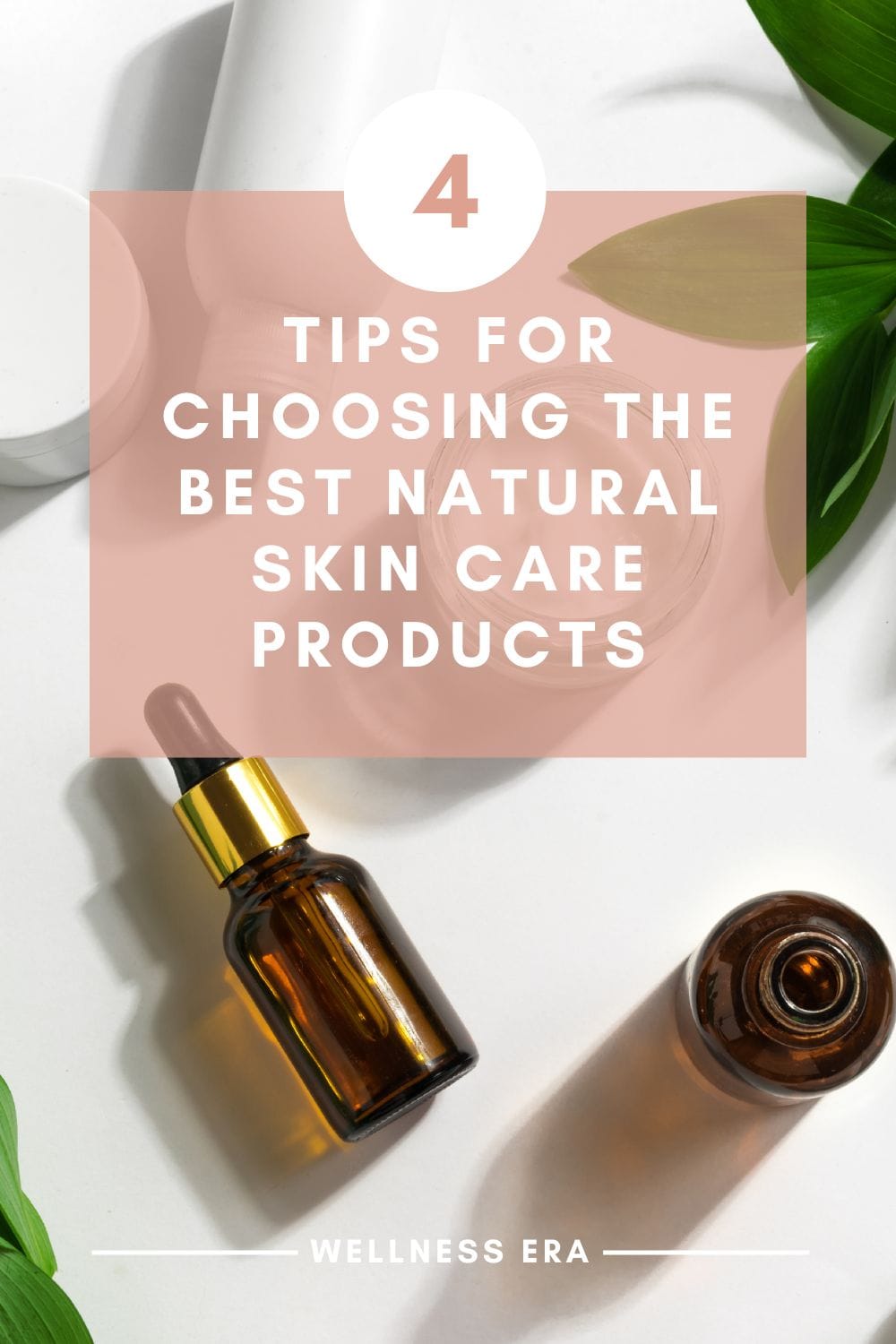
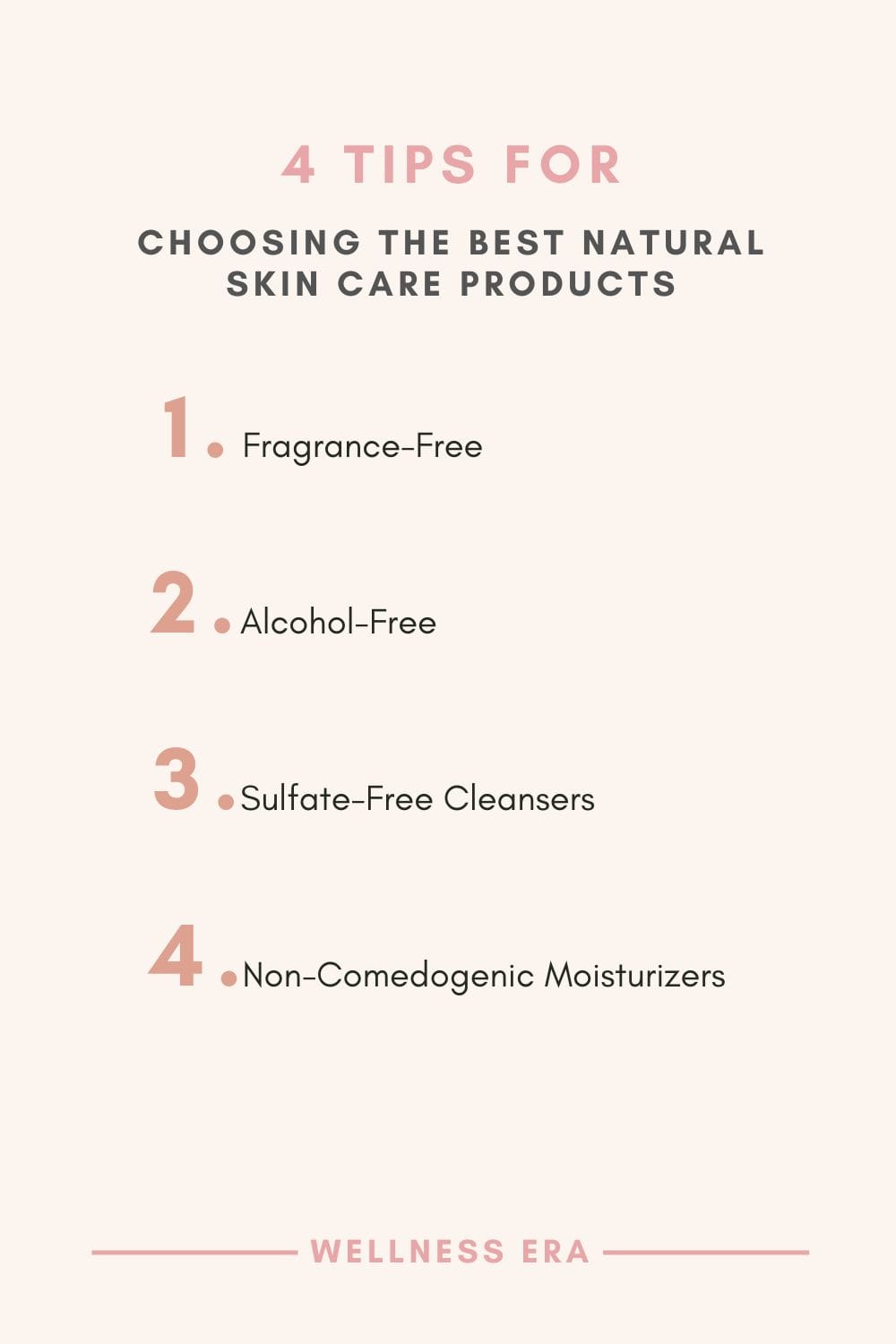
Skincare products with harsh ingredients can do more harm than good for oily skin. Fragrances, alcohol, sulfates, and even some natural oils may irritate your skin, leading to excess sebum production. To balance oily skin, switch to gentle, hypoallergenic, non-comedogenic products that keep your skin calm and oil production in check—because less irritation means less oil.
Taking care of oily skin naturally starts with understanding the basics of holistic skincare. From choosing the right ingredients to creating a routine that supports your skin’s unique needs, building a strong foundation is key. If you’re ready to dive deeper into natural skincare, check out this complete guide to natural skin care for beginners for simple, effective tips to help you glow naturally!
References
Draelos, Z.D. (2012). Cosmetic dermatology: products and procedures. Wiley-Blackwell. (URL: Wiley Online Library)
Frosch, P.J. (2012). Adverse effects of cosmetics and toiletries: clinical and toxicological aspects. Springer Science & Business Media. (URL: SpringerLink)
Kim, J., Kim, E.H., Oh, J.H., & Cho, S. (2018). Transepidermal Water Loss, Sebum Secretion and Skin Surface pH in Acne: A Comparative Study according to the Severity of Acne. Clinical, Cosmetic and Investigational Dermatology, 11, 150-155. (URL: PubMed Central)
Lazarov, A. (2015). Fragrance contact dermatitis. Dermatitis, 26(5), 232-238. (URL: PubMed)
Orchard, A. & Van Vuuren, S. (2017). Commercial essential oils as potential antimicrobials to treat skin diseases. Evidence-Based Complementary and Alternative Medicine, 2017, 4517971. (URL: PubMed Central)
Warshaw, E.M., Buchness, M.R., & Zug, K.A. (2011). Fragrance sensitivity: a pilot study of the effects of fragrance in cosmetic products on quality of life. Dermatitis, 22(6), 316-322. (URL: PubMed)
Step 3: Protect Your Skin from Sun and Environmental Damage
Managing oily skin also means protecting it from external factors like the sun and pollution. While many people think the sun can “dry out” oily skin, the truth is that UV exposure and environmental pollutants can exacerbate oil production and cause long-term damage (Lahiri et al., 2019). Protecting your skin from these elements is crucial for maintaining a balanced, healthy complexion.
How Sun Exposure and Pollution Affect Oily Skin
The sun’s UV rays can have a major impact on your skin, especially if you have an oily complexion. Sun exposure can temporarily dry out the skin’s surface, creating the illusion that your skin is less oily. However, this drying effect is deceptive. In response to this dehydration, your sebaceous glands may go into overdrive to replenish the lost moisture, resulting in even oilier skin (Moyal, 2017).
Pollution also plays a significant role in how your skin behaves. Pollutants in the air, such as free radicals from vehicle emissions and industrial activities, can clog your pores and oxidize sebum on the skin’s surface. This oxidation process not only increases oil production but also leads to blackheads, clogged pores, and increased inflammation (Kim et al., 2019).
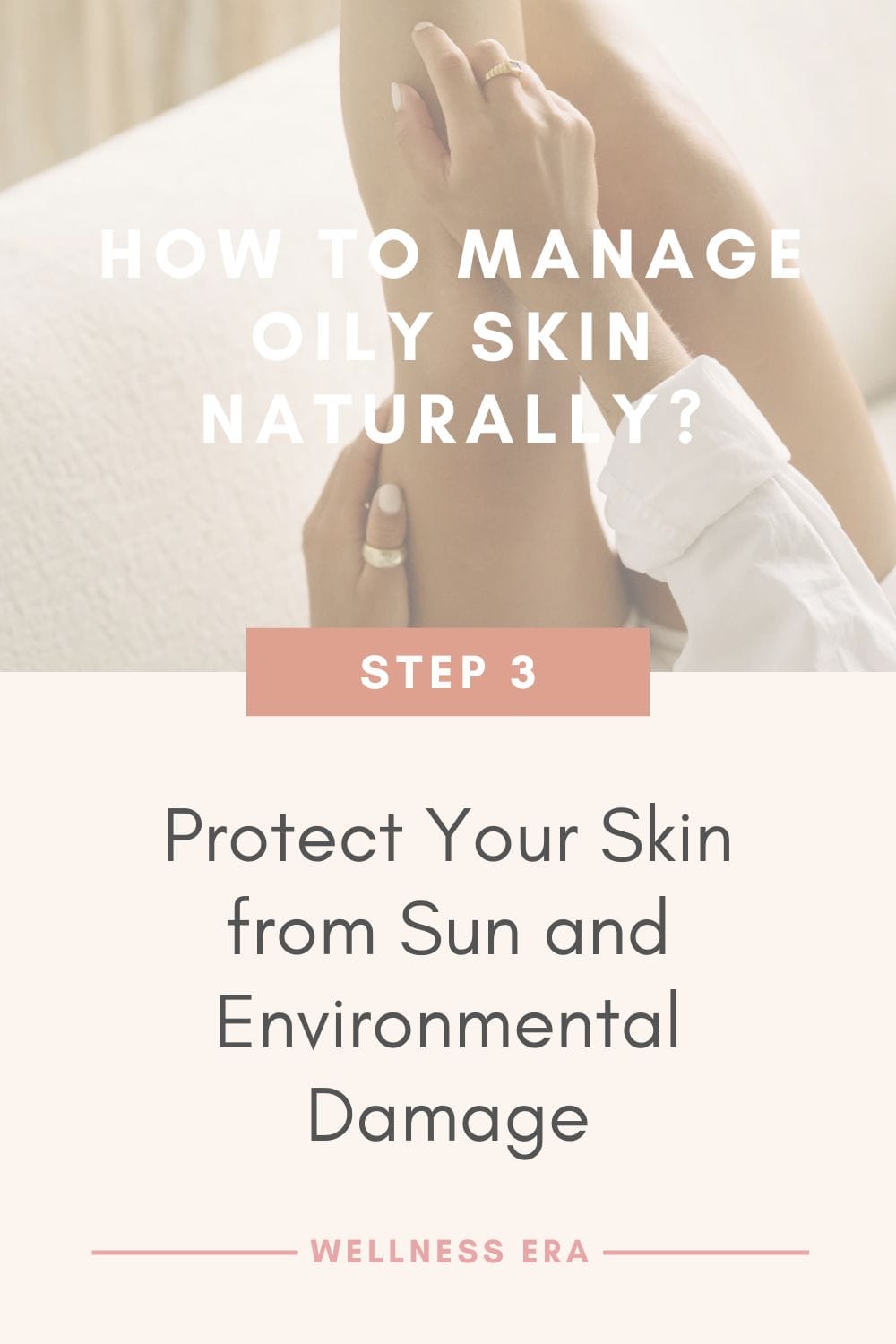
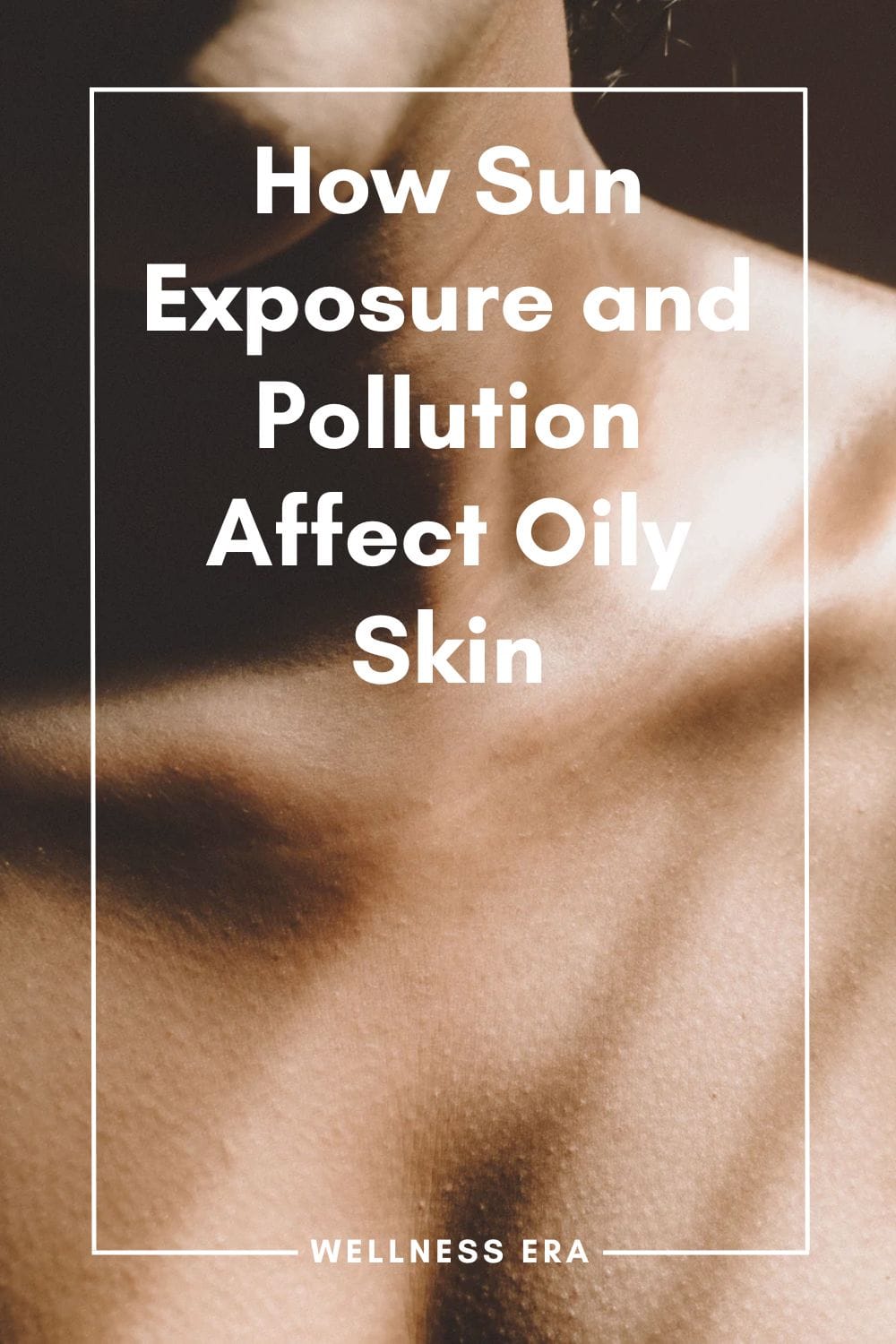
Myths About Sun Drying Out Oily Skin – Why It Leads to More Oil
A common misconception is that the sun can dry out oily skin, but this couldn’t be further from the truth. Here’s why:
Dehydration Triggers Rebound Oil Production: When the sun dehydrates your skin, it strips away essential moisture, which signals your sebaceous glands to produce even more oil to protect your skin. This leads to a cycle of dryness and overproduction of sebum, resulting in a greasy appearance (Moyal, 2017).
UV Damage Disrupts the Skin Barrier: Prolonged sun exposure damages the skin’s protective barrier, making it more vulnerable to environmental toxins, pollutants, and bacteria. This damage not only increases oil production but also leads to inflammation and breakouts (Lahiri et al., 2019).
Long-Term Exposure Increases Acne Risk: Over time, consistent exposure to UV rays can worsen acne in oily skin. The breakdown of skin cells combined with increased sebum production can clog pores, resulting in more frequent and severe breakouts (Moyal, 2017).
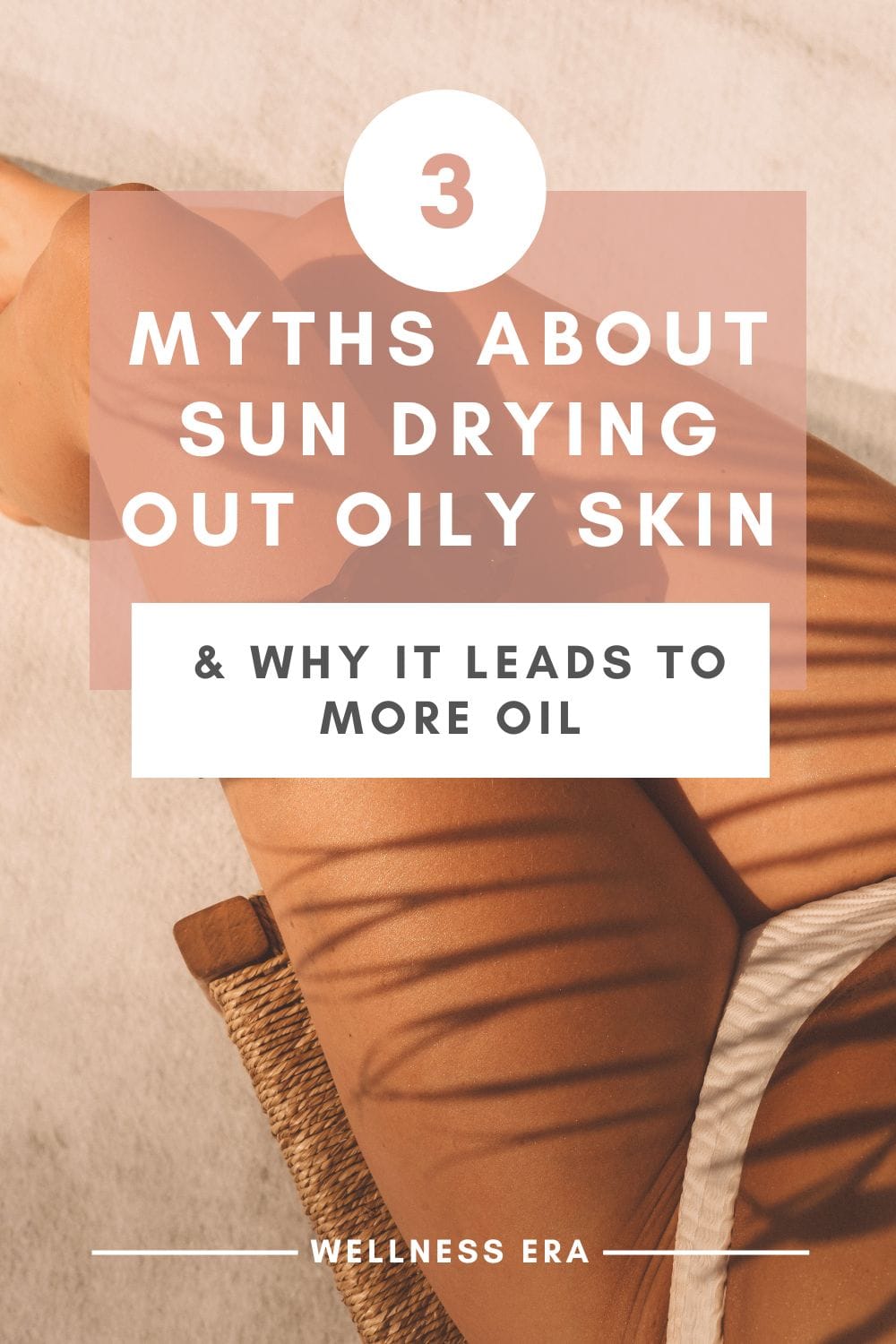
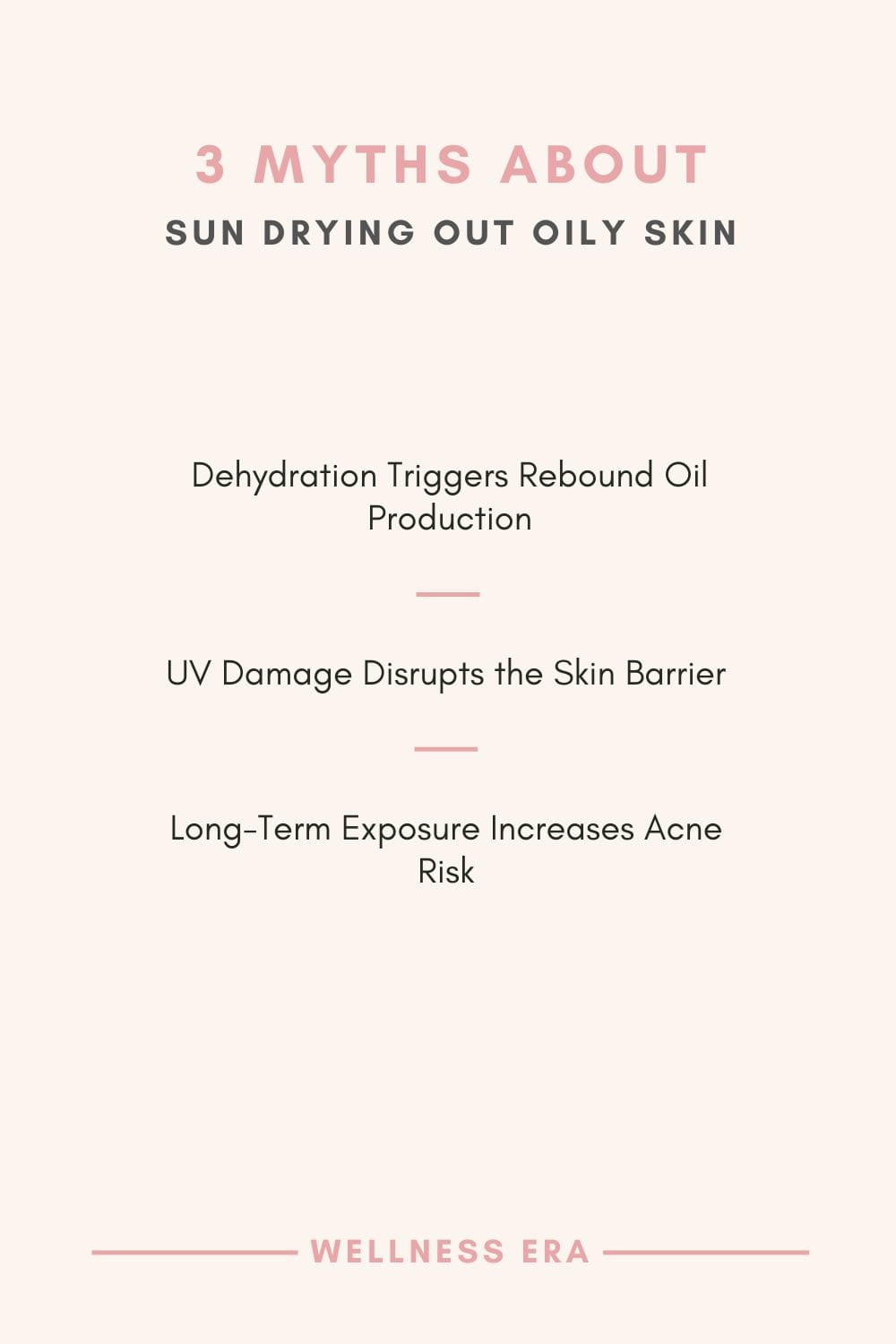
The Best Natural Sunscreens for Oily Skin Protection
Choosing the right sunscreen is crucial for protecting oily skin without clogging pores or causing excess oil production. Mineral-based sunscreens are an excellent choice because they provide a physical barrier that reflects UV rays without irritating the skin (Moyal, 2017). Here are some tips for selecting the best natural sunscreen for oily skin:
Look for Zinc Oxide or Titanium Dioxide: These minerals are non-comedogenic and offer broad-spectrum protection from both UVA and UVB rays. They don’t clog pores, making them ideal for oily and acne-prone skin (Moyal, 2017).
Oil-Free Formulas: Opt for sunscreens labeled “oil-free” or “non-comedogenic.” These formulations are lightweight and won’t leave a greasy residue on the skin.
Natural Sunscreen with Antioxidants: Some natural sunscreens contain ingredients like green tea extract or vitamin C, which provide additional protection against free radicals and environmental damage (Svobodová et al., 2011). These antioxidants can help combat the oxidative stress caused by pollution and UV exposure.
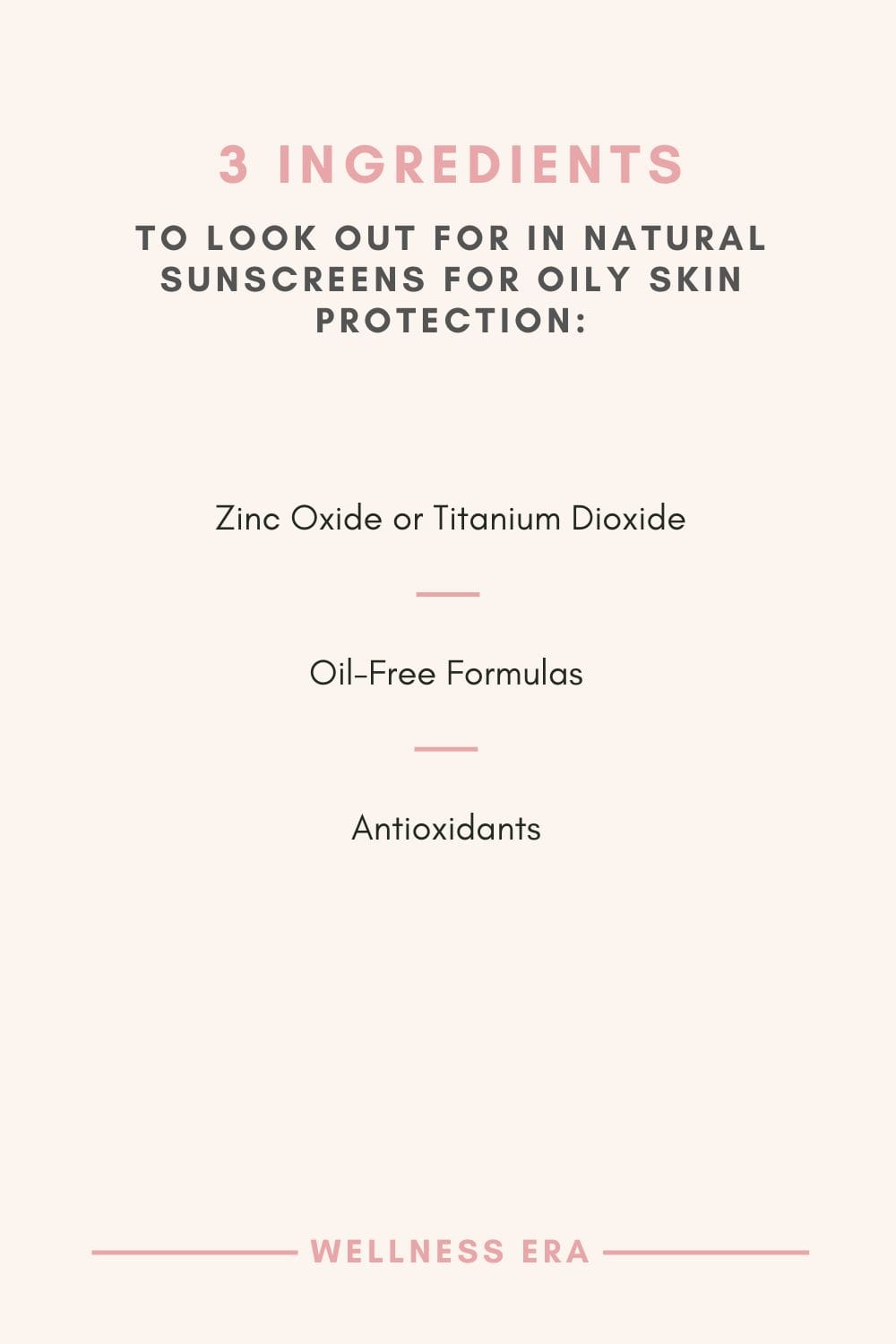
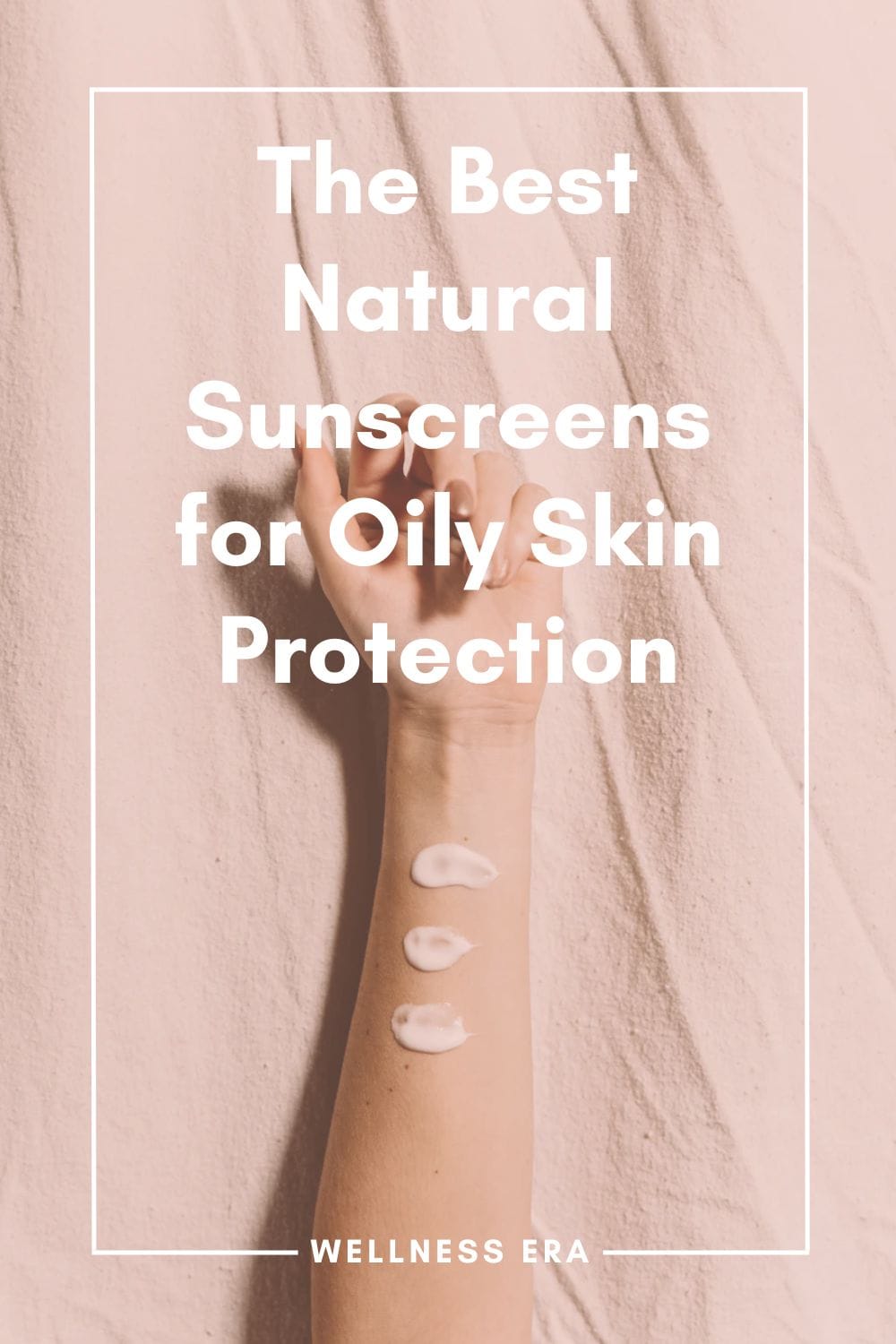
Environmental Defense: Shield Your Skin from Pollution and Harmful Elements
In addition to protecting your skin from the sun, it’s important to shield it from everyday pollutants that can clog pores and trigger inflammation. Here are some daily habits to adopt for protecting oily skin from environmental damage:
Keep Your Phone Clean: Our phones carry a surprising amount of bacteria, dirt, and oil. Regularly wipe your phone screen with alcohol wipes to prevent transferring these pollutants to your face.
Change Pillowcases Frequently: Dirt, oil, and sweat can build up on pillowcases, contributing to clogged pores and breakouts. Change your pillowcases at least once a week to keep your skin clean.
Wash Your Face After Sweating: If you’ve been exercising or spending time outside in a polluted area, cleanse your skin as soon as possible. Sweat mixed with pollutants can clog pores, leading to increased oil production and breakouts.
Avoid Touching Your Face: Throughout the day, your hands come into contact with a variety of pollutants and bacteria. Try to avoid touching your face, as this can transfer dirt and oil to your skin, worsening oily conditions.
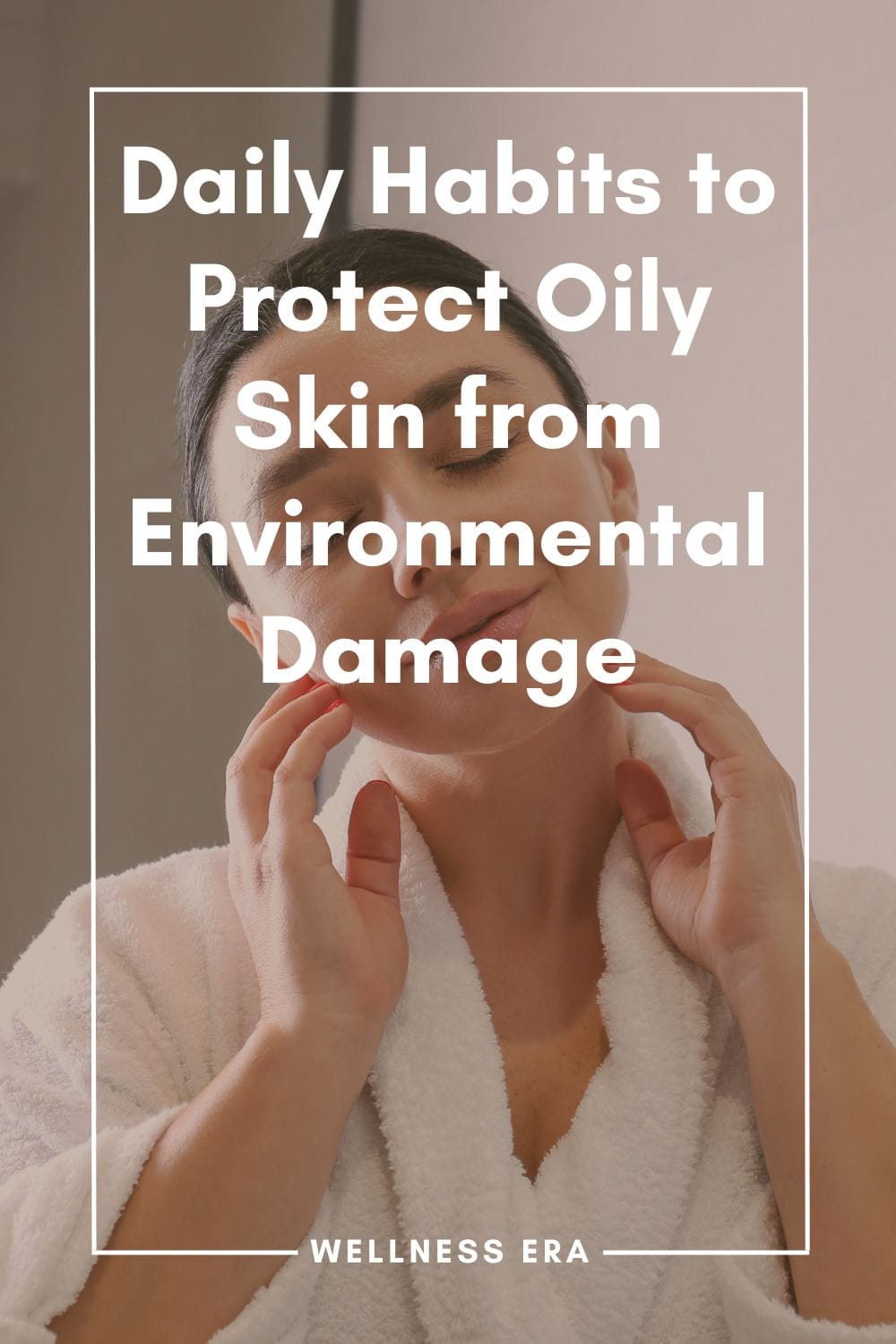
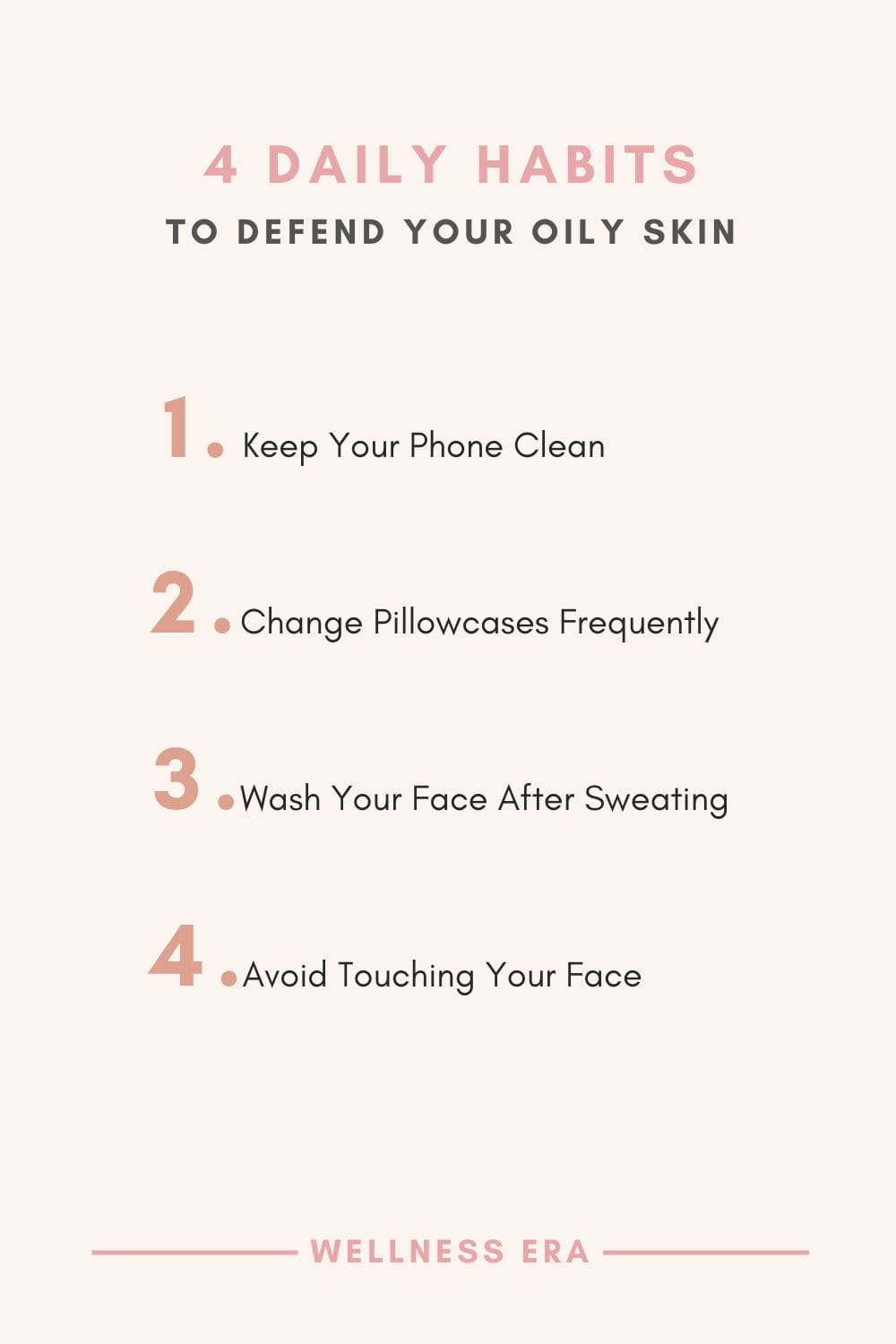
Sun exposure and pollution might seem like they dry out oily skin, but in reality, they can make it worse by triggering excess oil production. Protect your skin with non-comedogenic, mineral-based sunscreens and antioxidants to defend against environmental damage. Remember, proper protection keeps oily skin balanced and prevents clogged pores caused by pollutants and UV rays.
Protecting your skin from UV rays and damage is essential for maintaining a balanced, healthy complexion. Discover natural, holistic ways to shield your skin with this next blog post on protecting your skin from UV radiation and environmental damage naturally and keep your skin glowing and protected every day!
References
Kim, Y.J., Kim, S., Lee, H., & Seo, Y.R. (2019). An Overview of Carcinogenic Heavy Metal: Molecular Toxicity Mechanism and Prevention. Journal of Cancer Prevention, 24(4), 201-208. (URL: PubMed)
Lahiri, K., Malakar, S., & Banerjee, U. (2019). Pollution and skin: The health impact of airborne particulate matter. Indian Journal of Dermatology, 64(4), 322-330.
Moyal, D. (2017). The effects of UV radiation on the skin. Sun Protection in Man, 2, 45-60. (URL: SpringerLink)
Svobodová, A., Psotová, J., & Walterová, D. (2011). Natural phenolics in the prevention of UV-induced skin damage. A Review. 17(3), 275-284. (URL: PubMed)
Step 4: Nourish Your Skin from the Inside Out with Hydration and a Balanced Diet
The health of your skin is a reflection of what’s going on inside your body. Many people with oily skin focus solely on external products, but internal factors like hydration and nutrition play a major role in controlling oil production. By nourishing your skin from within, you can promote balance and reduce the excessive sebum production that often leads to breakouts.
The Importance of Staying Hydrated for Oily Skin Control
It might seem counterintuitive, but oily skin can actually be a sign of dehydration. When your skin lacks moisture, your sebaceous glands overcompensate by producing more oil to protect against dryness. This excess oil can mix with dead skin cells and lead to clogged pores and acne. Keeping your skin properly hydrated can help regulate this process and prevent the overproduction of sebum (Palacios et al., 2020).
While drinking plenty of water is essential, it’s not just about how much water you consume—it’s also about how well your body retains that hydration. Minerals like electrolytes (such as sodium, potassium, and magnesium) help your body maintain its fluid balance, ensuring that the moisture you consume is effectively absorbed and used by your cells.
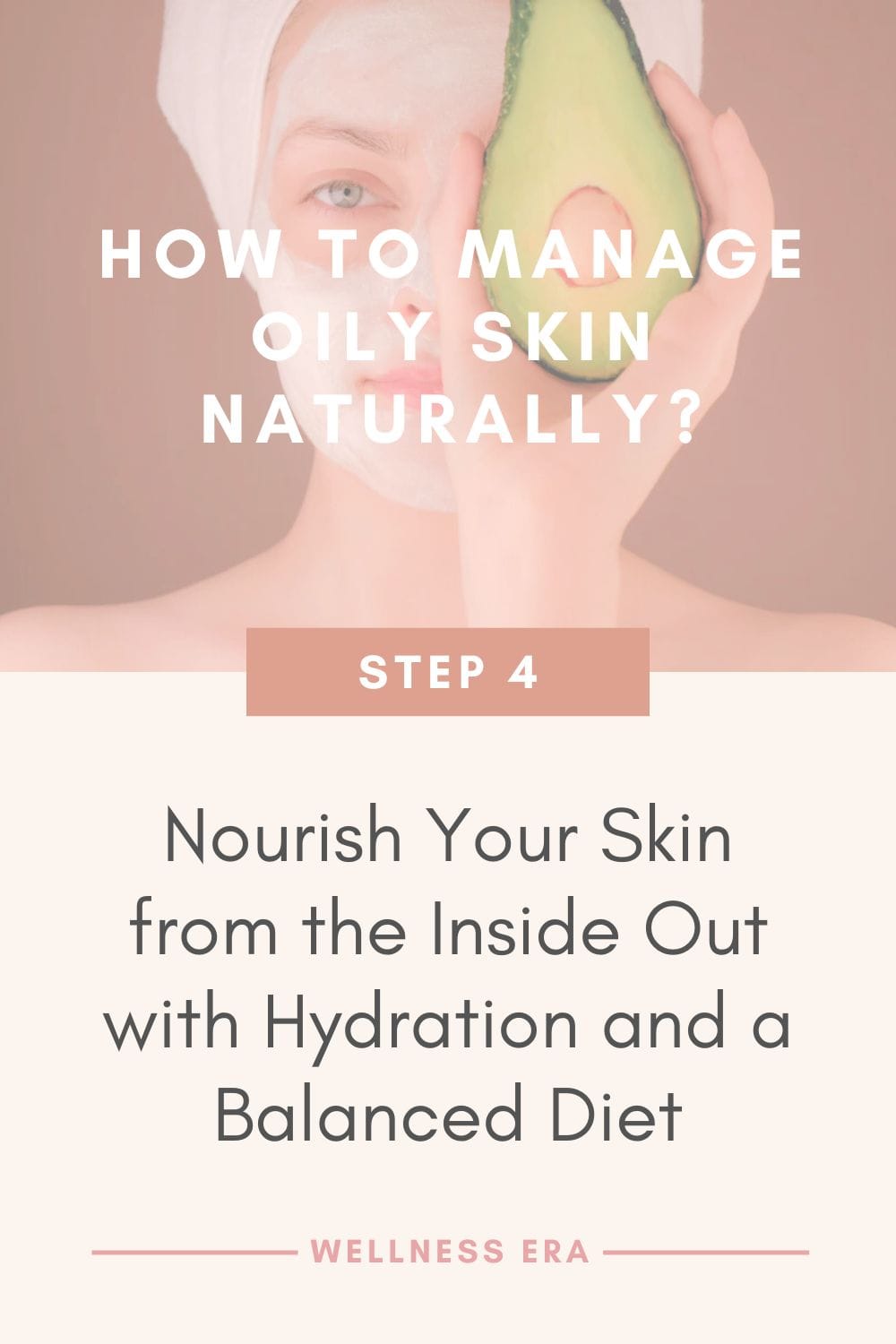
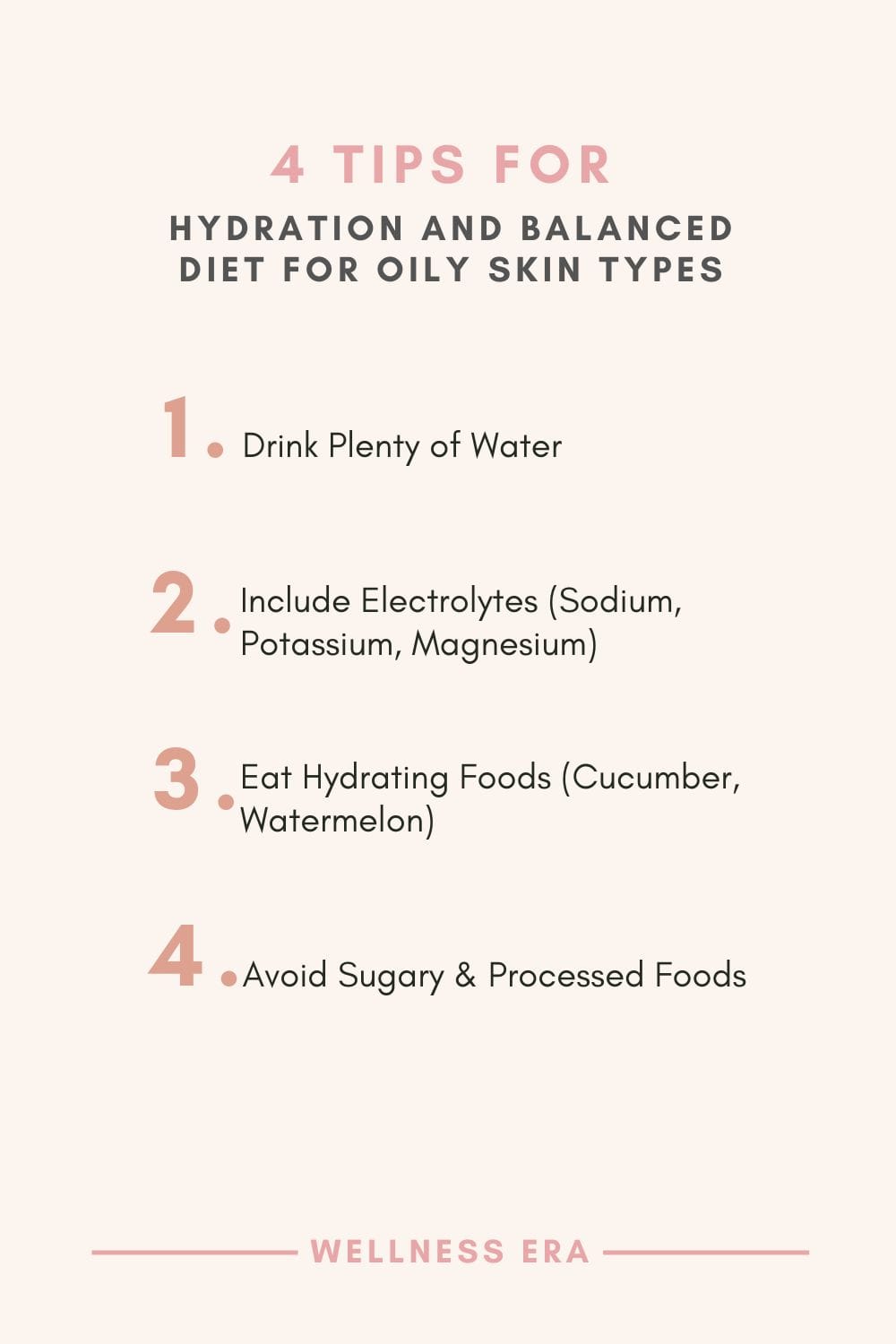
Daily Water Intake Recommendations: Aim to drink at least 8-10 glasses of water a day. If you live in a hot or humid climate or exercise frequently, you may need more to stay properly hydrated.
Best Foods to Eat for Healthy, Balanced Skin
What you eat directly impacts how your skin behaves. Diets rich in whole, unprocessed foods are known to reduce inflammation, promote gut health, and keep oil production under control. Here are some of the best foods to include in your diet for healthier, balanced skin:
Leafy Greens: Vegetables like spinach, kale, and Swiss chard are packed with vitamins and antioxidants that help to reduce inflammation and promote skin health. They’re also rich in water content, which helps to keep your skin hydrated (Alaluf et al., 2002).
Omega-3 Fatty Acids: Found in fish like salmon, flaxseeds, and walnuts, omega-3s help regulate oil production and keep your skin moisturized from within. These healthy fats also reduce inflammation, which can help prevent breakouts (Simopoulos, 2002).
Whole Grains: Whole grains like quinoa, brown rice, and oats are rich in fiber, which promotes a healthy digestive system and helps regulate blood sugar levels. Stable blood sugar levels are crucial for maintaining balanced skin, as spikes in blood sugar can lead to excess oil production and acne (Smith et al., 2007).
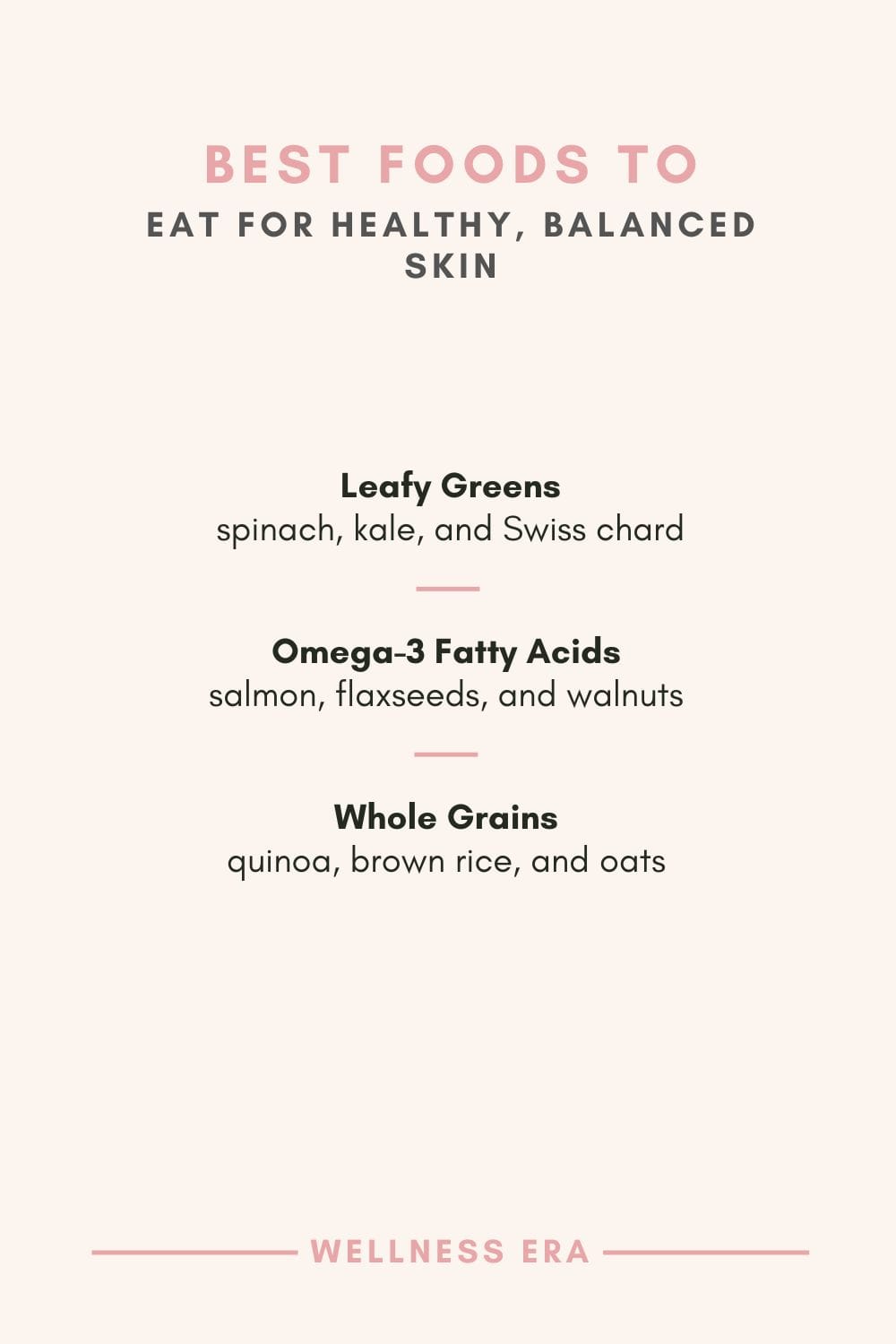
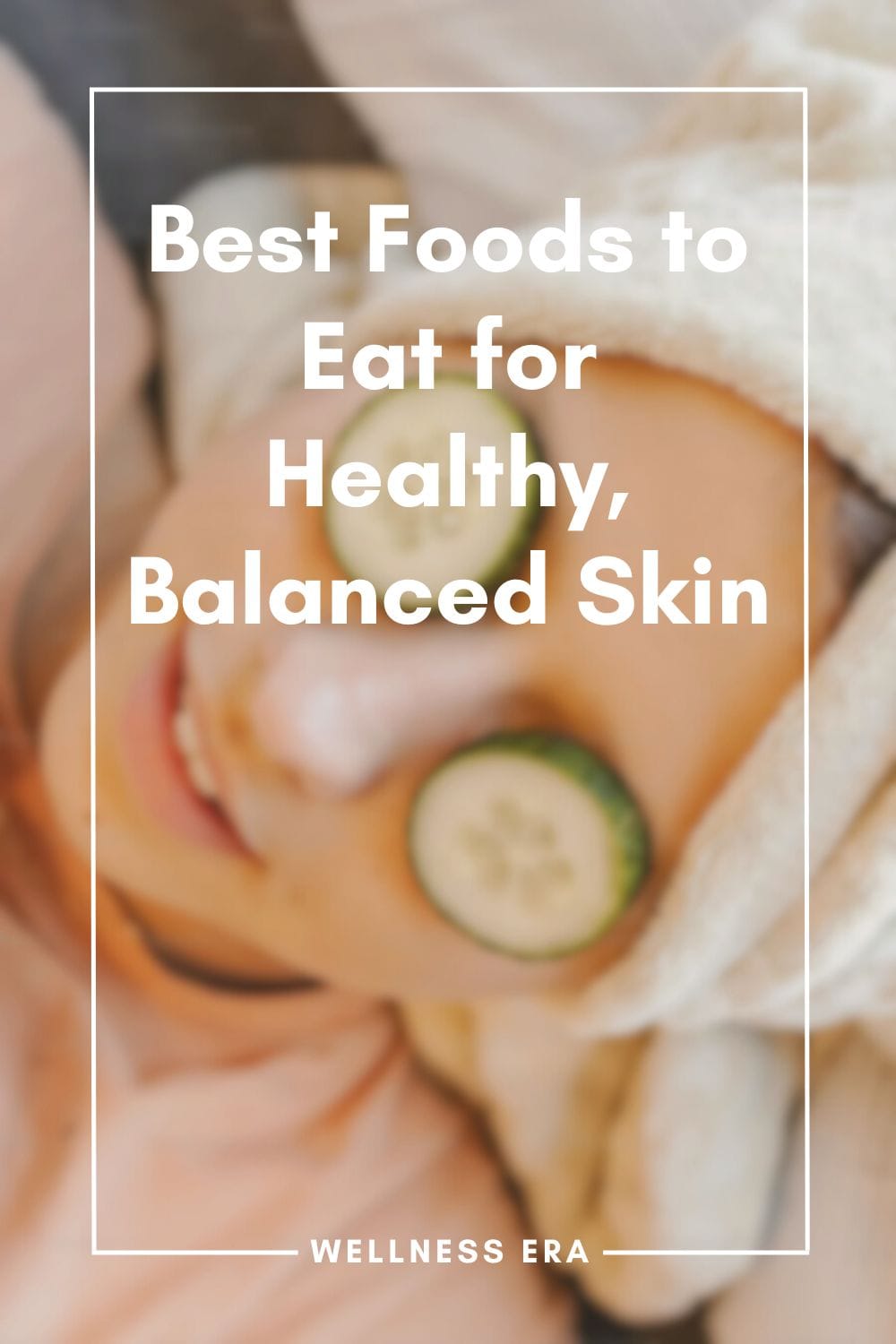
On the other hand, processed foods and refined sugars can spike your blood sugar and trigger insulin production, which can result in inflammation and increased sebum production. To maintain balance, avoid greasy, sugary, and heavily processed foods that can exacerbate oily skin.
Essential Nutrients and Supplements to Regulate Sebum Production
To help control oil production, you can incorporate certain vitamins, minerals, and supplements that support healthy skin function. Here are some of the best options for managing oily skin:
Vitamin A: Known for its role in reducing oil production and preventing acne, vitamin A helps regulate the growth of skin cells and reduces the clogging of pores (Chivot, 2009). You can find it in foods like sweet potatoes, carrots, and leafy greens or as a supplement in the form of retinoids.
Zinc: This mineral is particularly beneficial for those with oily or acne-prone skin. Zinc reduces inflammation, inhibits the production of oil, and helps the skin recover from damage (Prasad, 2008). You can find zinc in foods like chickpeas, lentils, and pumpkin seeds, or take it as a supplement.
Biotin (Vitamin B7): Biotin helps maintain the health of your skin, hair, and nails. While deficiencies in biotin are rare, this vitamin plays a crucial role in improving skin health and regulating oil production (Mock, 2005).
Probiotics: Gut health and skin health are closely linked, and incorporating probiotics into your diet can help maintain a healthy balance of bacteria in your digestive system. A healthy gut can reduce inflammation throughout the body, including your skin, leading to less oil production and fewer breakouts (Bowe & Logan, 2011).
Interested in reading more about adding whole foods into your wellness routines? Whole Food Nutrition: The Science Behind Eating for Wellness explains it all!
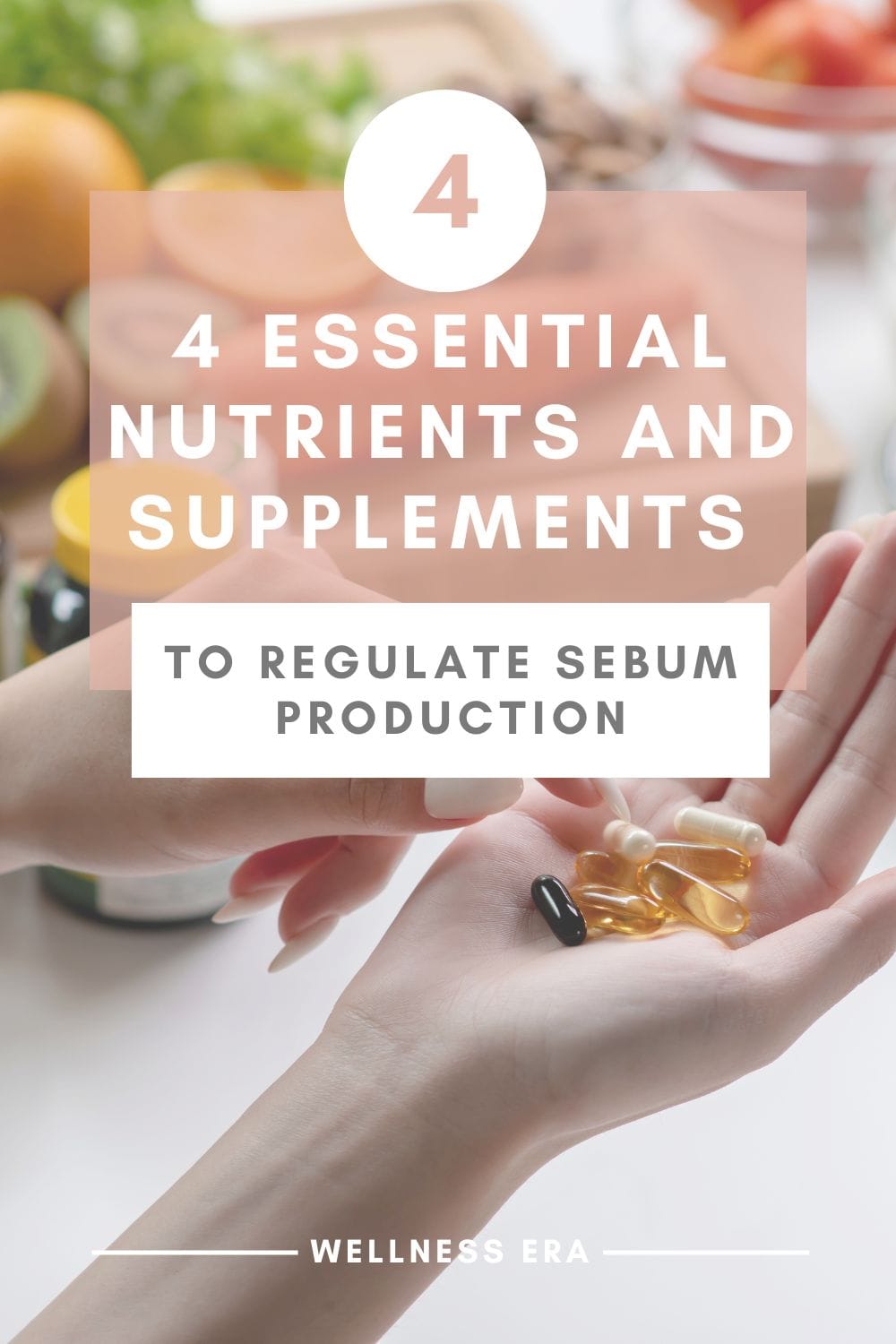
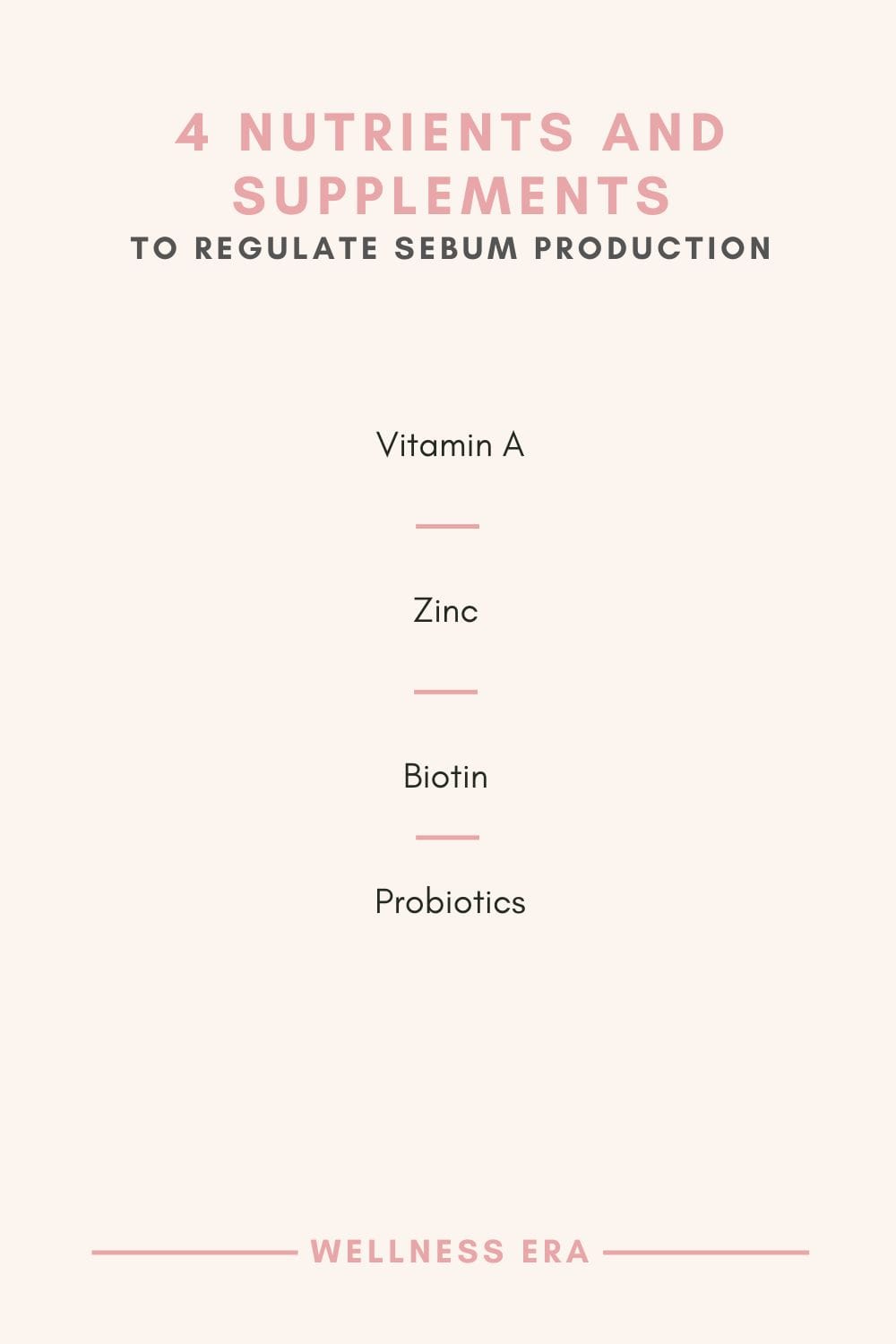
Healthy skin starts from within! Staying hydrated and eating the right foods—like leafy greens, omega-3s, and whole grains—can work wonders in controlling oil production. Avoid processed foods and sugary treats that can spike your oil levels. Focus on a balanced diet, plenty of water, and key nutrients like vitamin A, zinc, and probiotics for clearer, glowing skin.
References
Alaluf, S., Atkins, D., Barrett, K., Blount, M., Carter, N., & Heath, A. (2002). Ethnic variation in melanin content and composition in photoexposed and photoprotected human skin. Pigment Cell Research, 15(2), 112-118. (URL: Wiley Online Library)
Bowe, W.P., & Logan, A.C. (2011). Acne vulgaris, probiotics and the gut-brain-skin axis – back to the future? Gut Pathogens, 3(1), 1-11. (URL: Gut Pathogens)
Chivot, M. (2009). Retinoid therapy for acne: A comparative review. Journal of Dermatological Treatment, 20(1), 22-30. (URL: )
Mock, D.M. (2005). Biotin: From nutrition to therapeutics. Journal of Nutritional Biochemistry, 16(7), 419-427. (URL: ScienceDirect)
Palacios, C., De-Regil, L.M., Lombardo, L.K., & Peña-Rosas, J.P. (2020). Vitamin D supplementation for women during pregnancy. Cochrane Database of Systematic Reviews, 1, CD008873. (URL: PubMed)
Prasad, A.S. (2008). Zinc in human health: Effect of zinc on immune cells. Molecular Medicine, 14(5-6), 353-357. (URL: PubMed Central)
Simopoulos, A.P. (2002). Omega-3 fatty acids in inflammation and autoimmune diseases. Journal of the American College of Nutrition, 21(6), 495-505. (URL: PubMed)
Smith, R.N., Mann, N.J., Braue, A., Mäkeläinen, H., & Varigos, G.A. (2007). A low-glycemic-load diet improves symptoms in acne vulgaris patients: A randomized controlled trial. American Journal of Clinical Nutrition, 86(1), 107-115. (URL: PubMed)
Step 5: Build an Effective Natural Skin Care Routine for Oily Skin
Creating a consistent skincare routine is essential for managing oily skin. This routine doesn’t need to be complicated, but it should include steps to cleanse, hydrate, and protect your skin while avoiding over-stripping or clogging your pores. The key is balance—using natural, gentle products that keep oil production in check without damaging the skin barrier.
Why You Need a Morning, Evening, and Weekly Skin Care Routine
A structured morning and evening routine ensures your skin remains clean and balanced, while a weekly ritual helps address any deeper concerns like clogged pores or excess oil. Let’s break it down:
Morning Routine: Your morning routine should be simple and focused on protecting your skin for the day ahead. Often, just rinsing your face with water is enough to refresh your skin without stripping its natural oils. If your skin feels oily, a gentle, sulfate-free cleanser can help remove any excess oil. Follow up with a lightweight, non-comedogenic moisturizer to hydrate your skin, and finish with a broad-spectrum, oil-free sunscreen (Moyal, 2017).
Evening Routine: The focus of your evening routine is cleansing and repairing your skin after a long day. Use a gentle cleanser to remove makeup, dirt, and pollutants from the skin, followed by a toner if needed. Hydrate with a non-comedogenic moisturizer that can help repair and balance your skin overnight.
Weekly Routine: Once or twice a week, add exfoliation and a face mask to your routine to help control oil and prevent clogged pores. Over-exfoliating can damage your skin barrier, so it’s important to keep this step to just a few times a week.
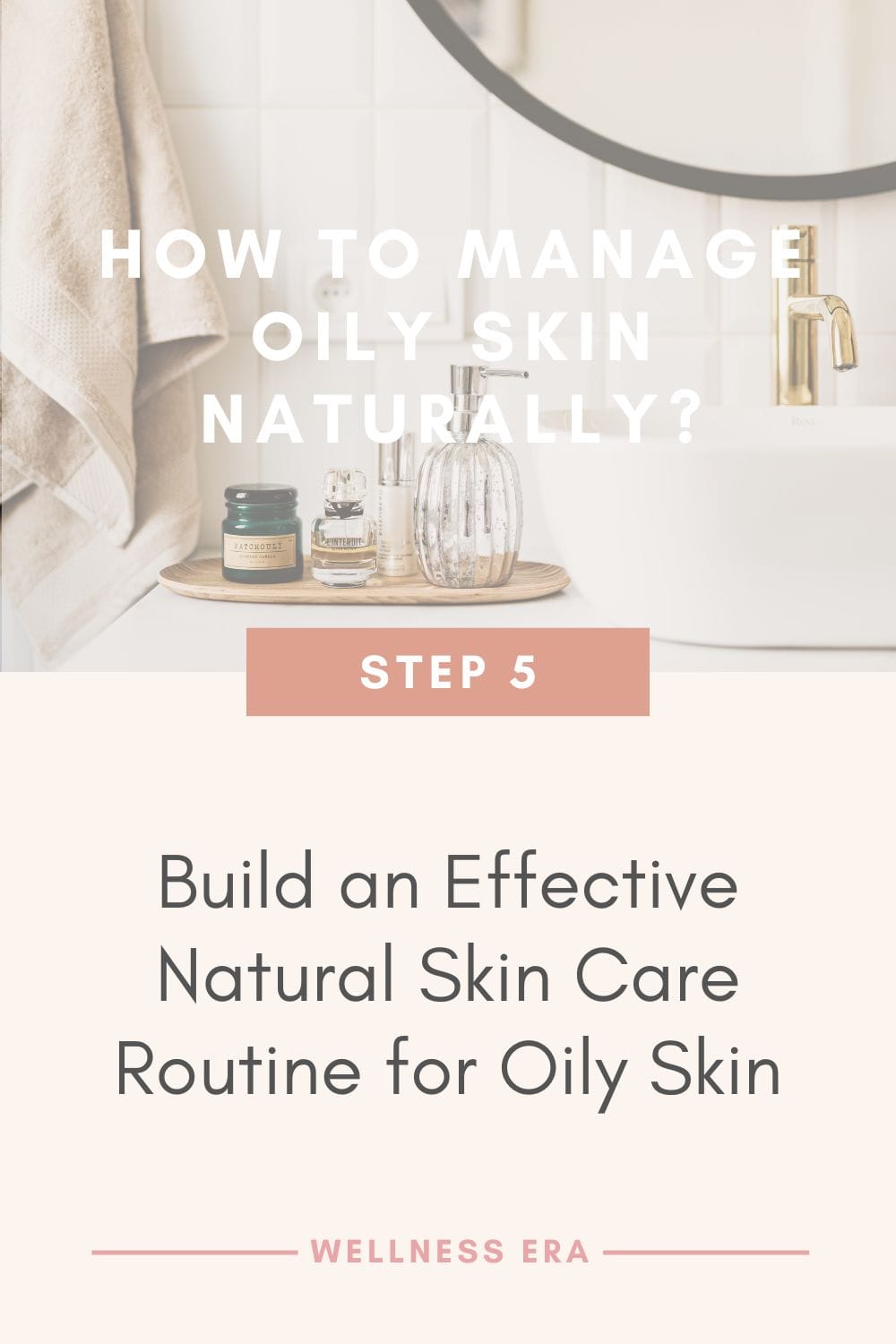
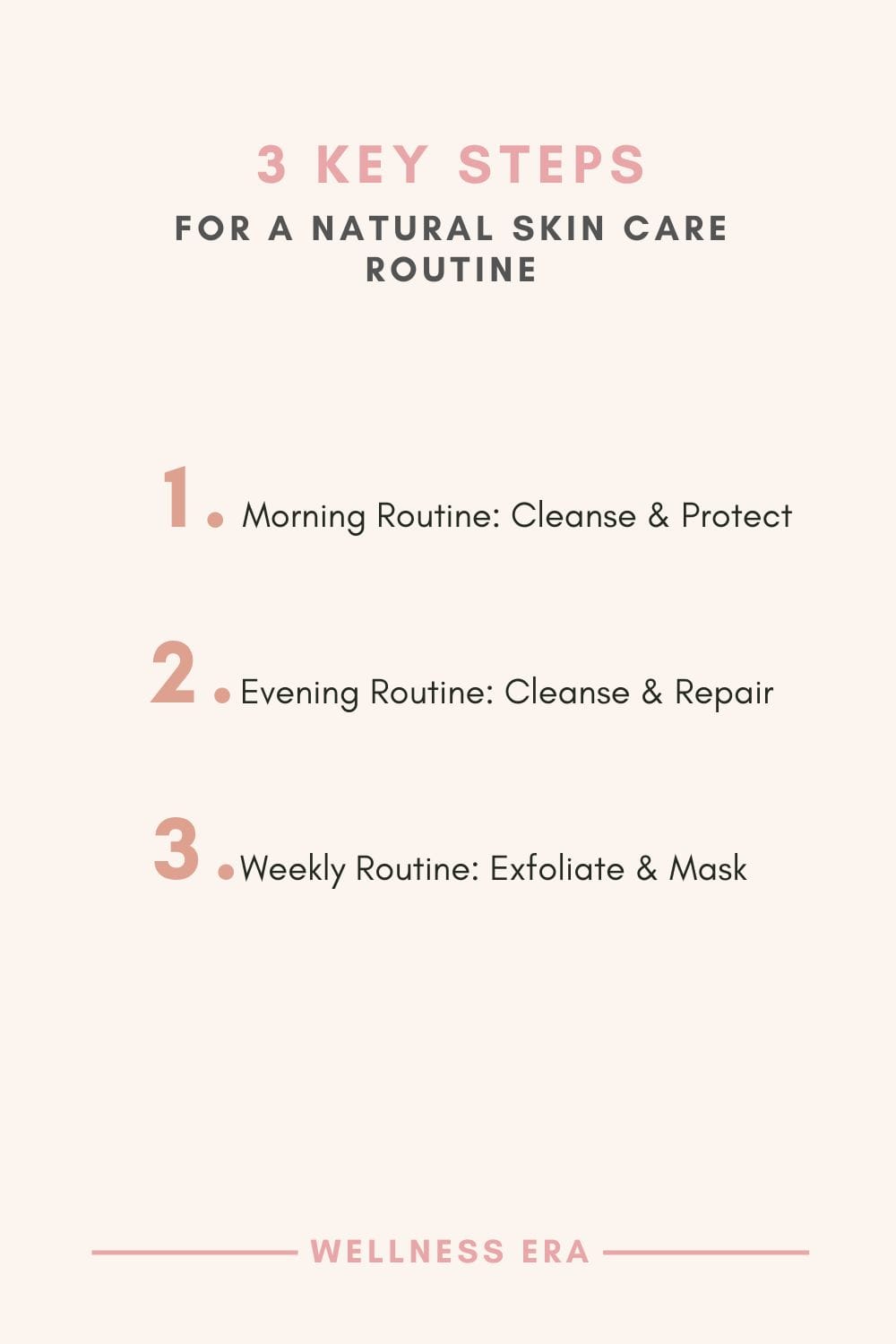
Natural Cleansers for Oily Skin: Gently Remove Dirt and Excess Oil
For oily skin, it’s crucial to avoid cleansers that strip away too much natural oil, as this can lead to rebound oil production. Instead, opt for gentle, sulfate-free cleansers that remove dirt and oil without causing irritation. Look for cleansers with natural ingredients like aloe vera, green tea extract, or witch hazel, which are soothing and help to balance oil production (Frosch, 2012).
When to Cleanse: Ideally, cleanse your skin once a day—once in the morning and once at night. In the morning, a simple water rinse may be enough, while a cleanser at night helps remove the day’s buildup of dirt and oil.
Hydrate Without Clogging: Best Natural Moisturizers for Oily Skin
Contrary to what many people think, oily skin still needs hydration. The right moisturizer can help keep your skin hydrated without clogging pores. Look for oil-free, non-comedogenic moisturizers that contain hydrating ingredients like hyaluronic acid, glycerin, or aloe vera. These lightweight, water-based moisturizers won’t clog your pores or leave your skin feeling greasy (Draelos, 2012).
When to Moisturize: Apply your moisturizer after cleansing and preferably in your nighttime routine. If you’re looking to protect your skin for sun or environmental damage, you can also apply it in the morning.
Exfoliation for Oily Skin: Keep Pores Clean with Gentle, Natural Scrubs
Exfoliation helps to remove dead skin cells that can mix with oil and clog pores. For oily skin, use gentle exfoliants like jojoba beads or bamboo powder rather than harsh physical scrubs, which can damage your skin’s protective barrier and lead to more oil production (Kim et al., 2018). Exfoliating once or twice a week is ideal to prevent build-up without over-stressing your skin.
Check out the 5 Best Natural Exfoliants for Clear Skin
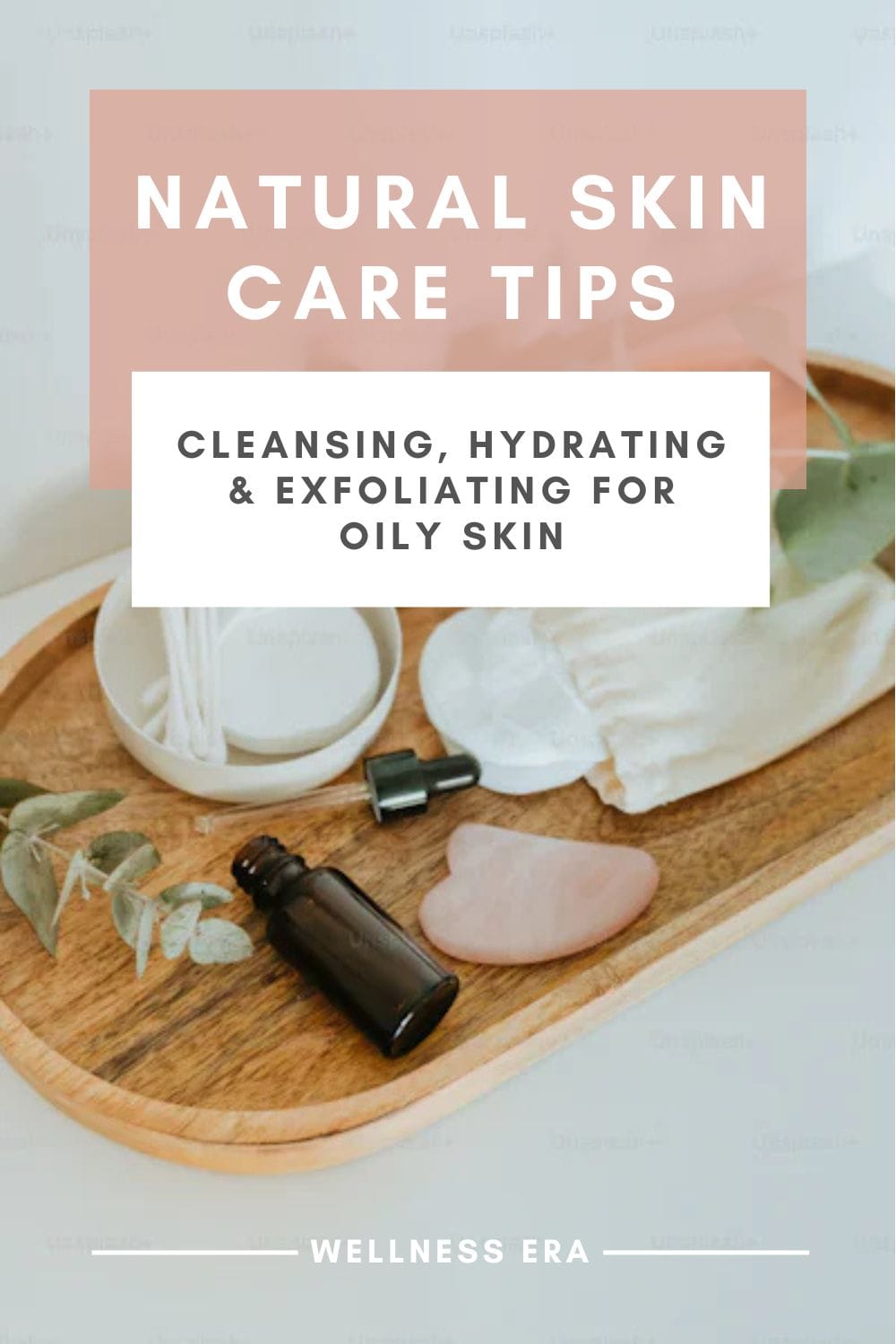
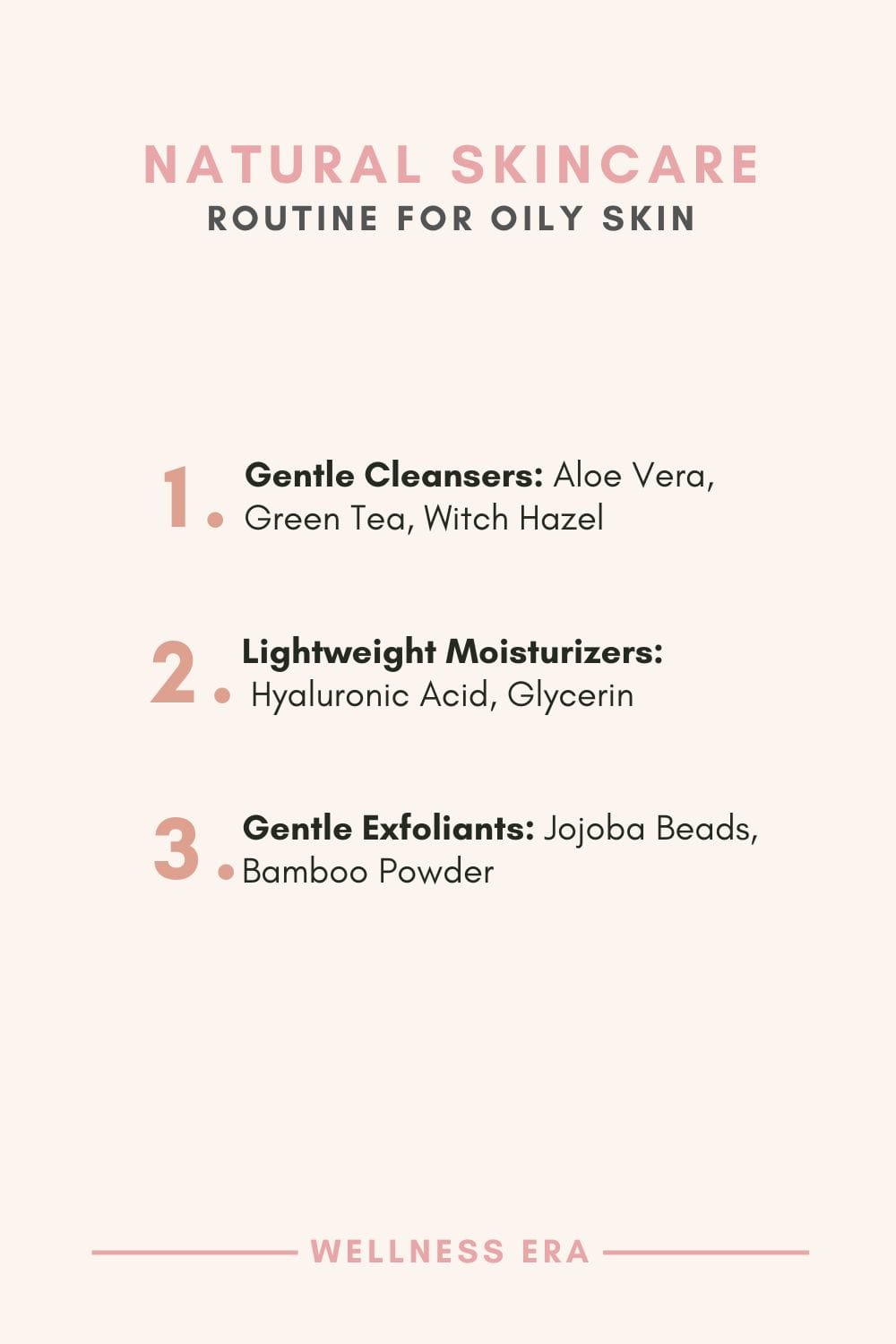
Treat Oily Skin with Face Masks: Deep Cleansing and Balancing Remedies
Face masks are a great way to give oily skin a deep clean and help balance excess sebum. Clay masks, particularly those containing bentonite or kaolin, are excellent for absorbing oil and purifying the skin without over-drying. Other options like charcoal masks can help detoxify the skin and unclog pores (Tienthavorn et al., 2019).
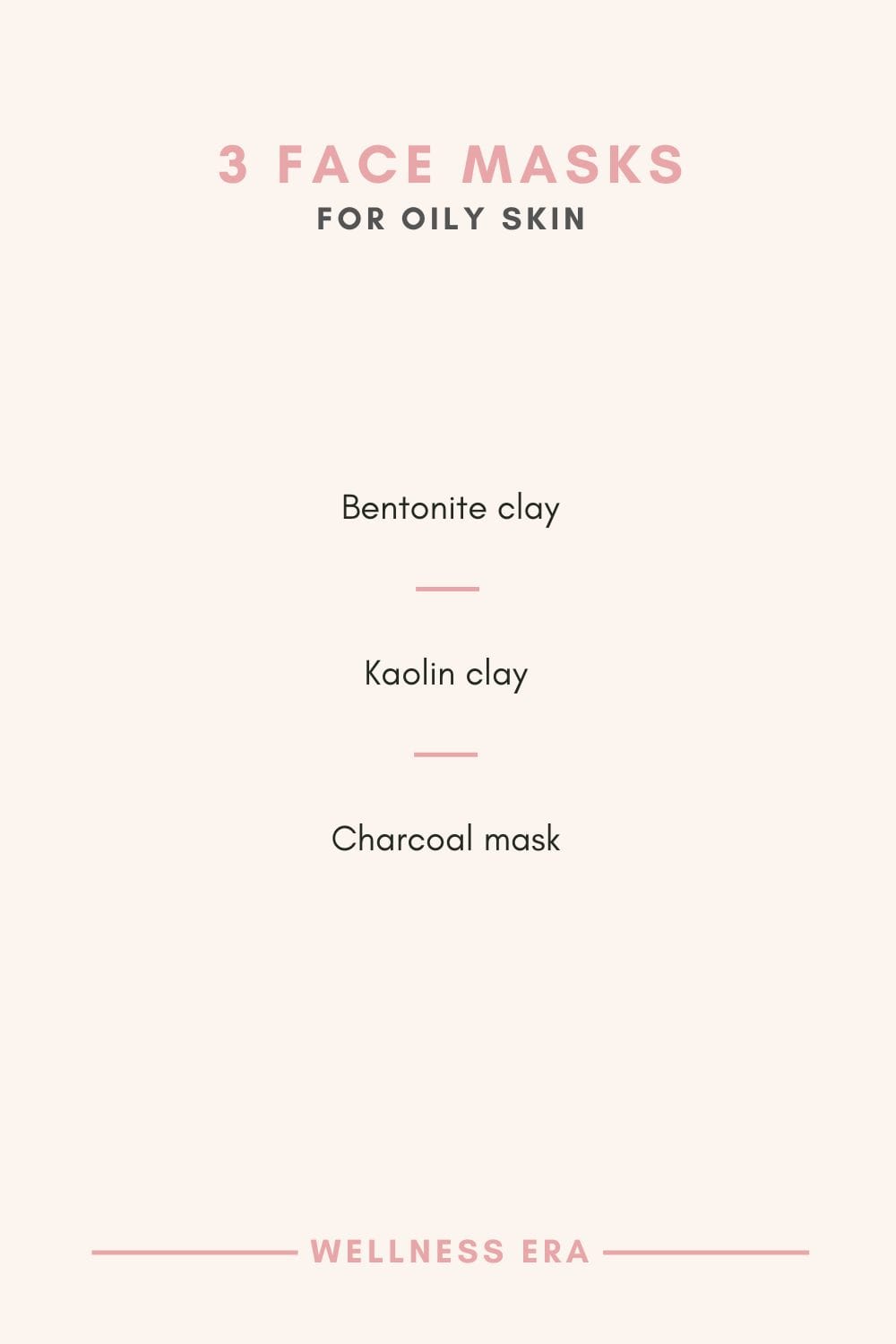
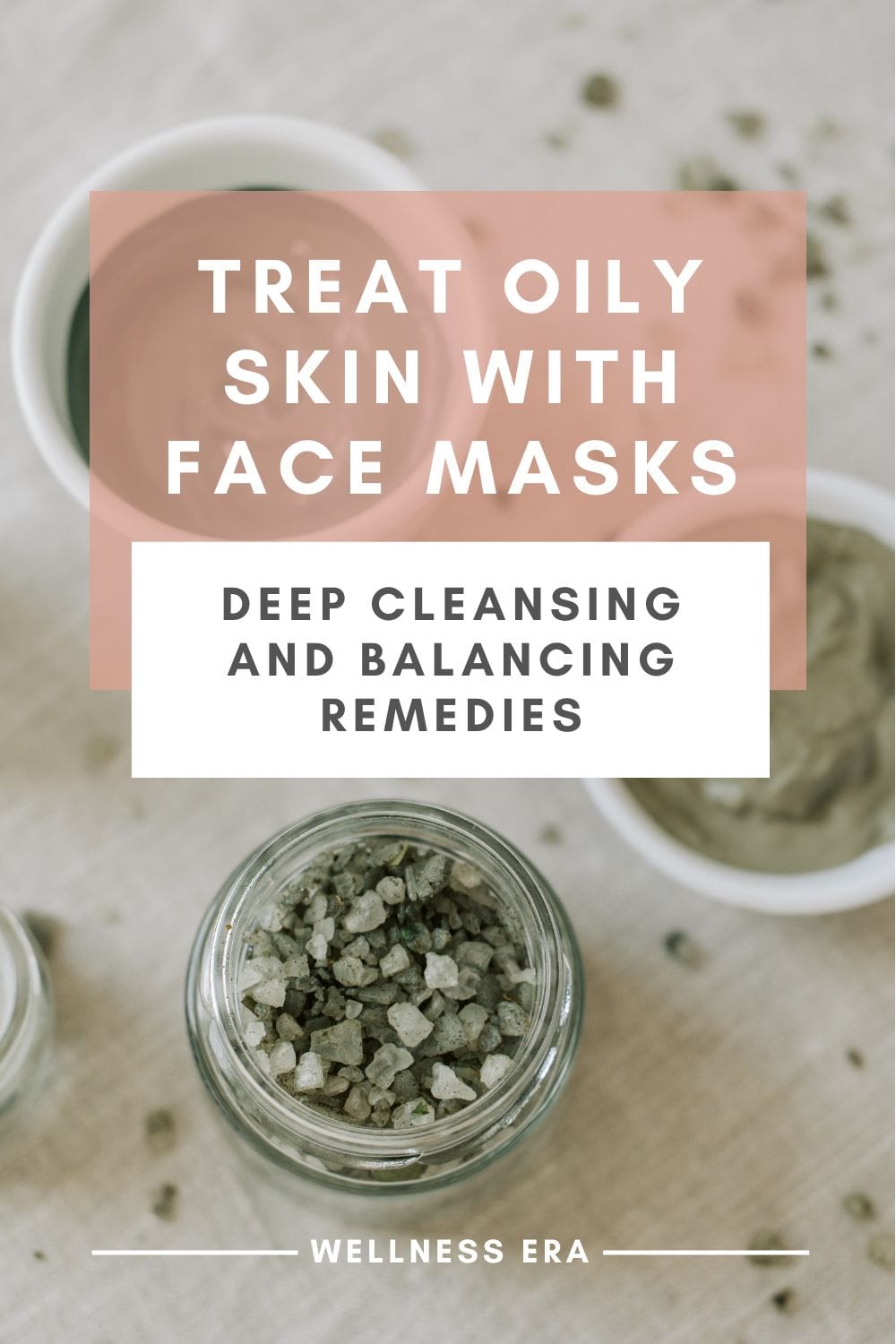
When to Use Masks: Apply a mask once or twice a week after exfoliating to give your skin an extra deep clean and to target oily areas.
Consistency is key when managing oily skin. A simple routine with a gentle cleanser, lightweight moisturizer, and oil-free sunscreen in the morning, paired with cleansing and hydrating in the evening, keeps your skin balanced. Add weekly exfoliation and a deep-cleansing face mask to prevent clogged pores. The right routine can keep oil in check without over-drying or causing irritation.
If you want to dive deep into everything about creating the best natural skin care routine for your oily skin, have a look at How to Manage Oily Skin Naturally: A Step-by-Step Guide. So you can stop struggling with oily skin and get simple and effective tips to balance and nourish your skin!
References
Draelos, Z.D. (2012). Cosmetic dermatology: Products and procedures. Wiley-Blackwell. (URL: Wiley Online Library)
Frosch, P.J. (2012). Adverse effects of cosmetics and toiletries: Clinical and toxicological aspects. Springer Science & Business Media. (URL: SpringerLink)
Kim, J., Kim, E.H., Oh, J.H., & Cho, S. (2018). Transepidermal water loss, sebum secretion and skin surface pH in acne: A comparative study according to the severity of acne. Clinical, Cosmetic and Investigational Dermatology, 11, 150-155.
Moyal, D. (2017). The effects of UV radiation on the skin. Sun Protection in Man, 2, 45-60. (URL: SpringerLink)
Tienthavorn, T., Bhuripanyo, K., & Tangpukdee, N. (2019). Efficacy and safety of Kaolin and Charcoal mask in treatment of acne vulgaris: A split-face randomized clinical trial. Journal of Cosmetic Dermatology, 18(4), 1202-1207. (URL: Wiley Online Library)
Conclusion
Managing oily skin doesn’t have to feel like an endless battle against shine and breakouts. By taking a step back and approaching your skin from all angles—what you eat, the products you use, and even your daily habits—you can transform the way your skin behaves. Oily skin has its perks, like natural moisture and a defense against early wrinkles. The trick is learning how to balance it, not fight it.
With these five simple, natural steps, you’ll have the tools you need to manage oily skin in a way that feels sustainable and effective. It’s not about quick fixes or stripping your skin dry—it’s about working with your body to create balance from the inside out. The best part? When you nurture your skin with care, you can say goodbye to constant oil blotting and hello to a healthy, radiant glow.
Embrace your oily skin—because when it’s managed naturally and thoughtfully, it can truly be one of your best assets.
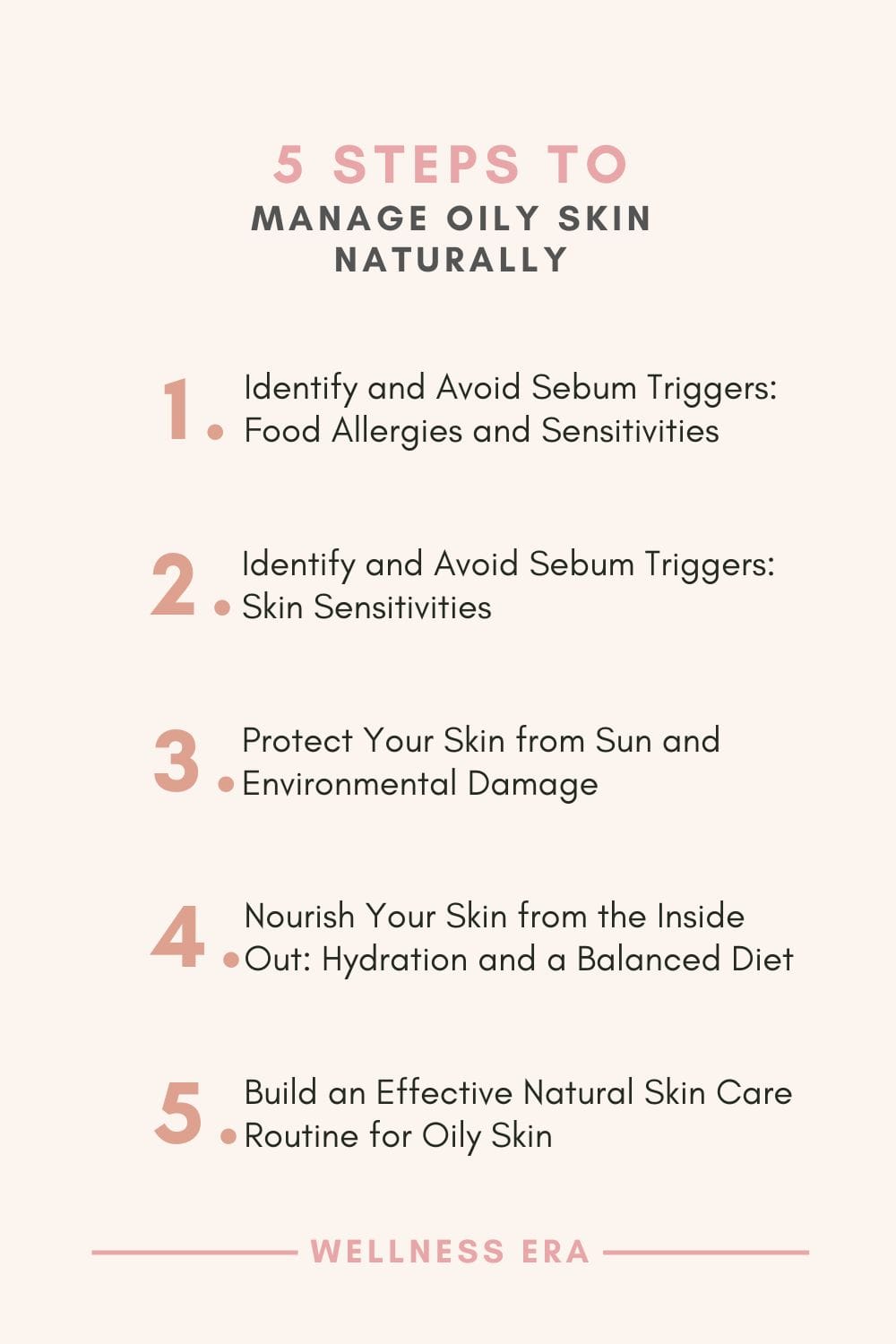
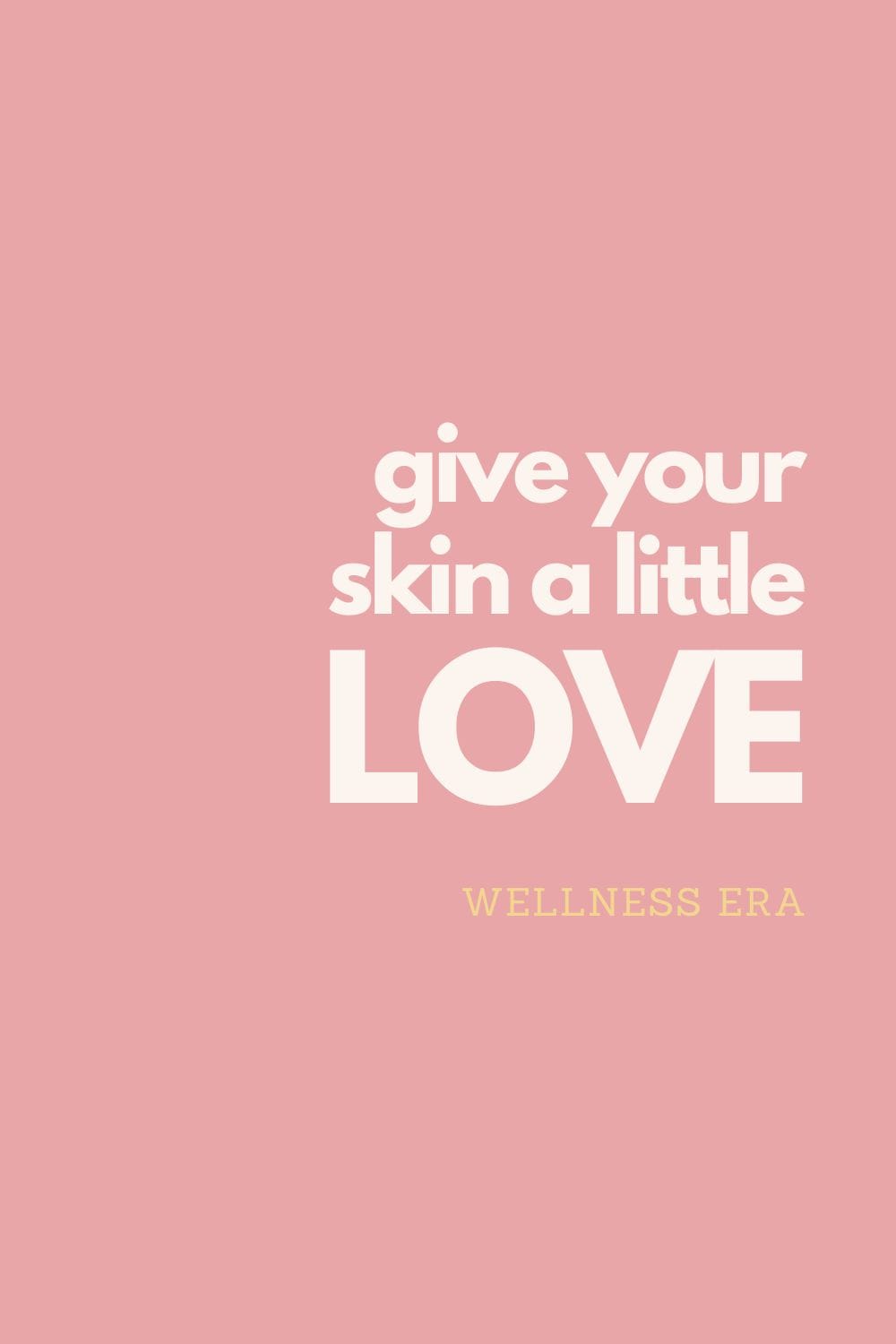
Frequently Asked Questions About Managing Oily Skin Naturally (FAQ)
How often should I exfoliate oily skin?
Exfoliating once or twice a week is enough to keep oily skin clear without over-stripping its natural oils. Over-exfoliating can damage the skin’s barrier and lead to more oil production. Stick to gentle exfoliants like jojoba beads or bamboo powder to avoid irritation (Kim et al., 2018).
Can drinking water really help reduce oily skin?
Yes! Staying hydrated helps regulate your skin’s moisture levels. When your skin is dehydrated, it produces more oil to compensate. Drinking 8-10 glasses of water a day ensures your skin stays hydrated from within, which can reduce excessive oil production (Palacios et al., 2020).
Are all-natural products better for oily skin?
Not all-natural products are automatically better. While many natural ingredients are great for sensitive or oily skin, some natural oils (like tea tree or lavender) can cause irritation and lead to increased oil production. Always choose products that are non-comedogenic and free from irritants like fragrances, harsh alcohols, and sulfates (Orchard & Van Vuuren, 2017).
How can I protect my skin from pollution if I live in a city?
Pollution can clog pores and oxidize sebum, leading to blackheads and breakouts. To protect your skin, cleanse daily to remove pollutants, use antioxidant-rich products like vitamin C or green tea extract, and always wear sunscreen to create a protective barrier against environmental damage (Kim et al., 2019; Svobodová et al., 2011).
What ingredients should I avoid in skincare products for oily skin?
Avoid heavy, occlusive ingredients like mineral oil, as they can trap sebum and bacteria beneath the skin’s surface, leading to clogged pores. Also, steer clear of harsh chemicals like sulfates and alcohol, as they can strip the skin and cause a rebound effect, leading to more oil production (Draelos, 2012).
References
Draelos, Z.D. (2012). Cosmetic dermatology: Products and procedures. Wiley-Blackwell. (URL: Wiley Online Library)
Kim, J., Kim, E.H., Oh, J.H., & Cho, S. (2018). Transepidermal Water Loss, Sebum Secretion and Skin Surface pH in Acne: A Comparative Study according to the Severity of Acne. Clinical, Cosmetic and Investigational Dermatology, 11, 150-155.
Kim, Y.J., Kim, S., Lee, H., & Seo, Y.R. (2019). An Overview of Carcinogenic Heavy Metal: Molecular Toxicity Mechanism and Prevention. Journal of Cancer Prevention, 24(4), 201-208. (URL: PubMed)
Orchard, A. & Van Vuuren, S. (2017). Commercial essential oils as potential antimicrobials to treat skin diseases. Evidence-Based Complementary and Alternative Medicine, 2017, 4517971. (URL: PubMed)
Palacios, C., De-Regil, L.M., Lombardo, L.K., & Peña-Rosas, J.P. (2020). Vitamin D supplementation for women during pregnancy. Cochrane Database of Systematic Reviews, 1, CD008873. (URL: PubMed)
Svobodová, A., Psotová, J., & Walterová, D. (2011). Natural phenolics in the prevention of UV-induced skin damage. A Review. 17(3), 275-284. (URL: Biomedical Papers)
Here is something you might also like..
Would you like to receive something special?
Try out the best, inspirational weekly newsletter for your natural wellness era!
My Wellness Era Weekly
SUBSCRIBE TO OUR NEWSLETTER
Your Weekly Dose of Natural Wellness
Fill out the form below, and you will reveice "My Wellness Era Weekly" delivered to your inbox.
What you can expect: a short, warm, and personal note from our founder. Mindset shifts, journal prompts, or self-care reminders. Inspiring quotea related to wellness, mindfulness, or self-love. Small, actionable wellness habits you can try. Recomendations we love, are testing, or recently discovered. Highlights of our latest blog posts.
+++ What we’re loving every single week.
QUICK LINKS
SOCIAL
CATEGORIES



